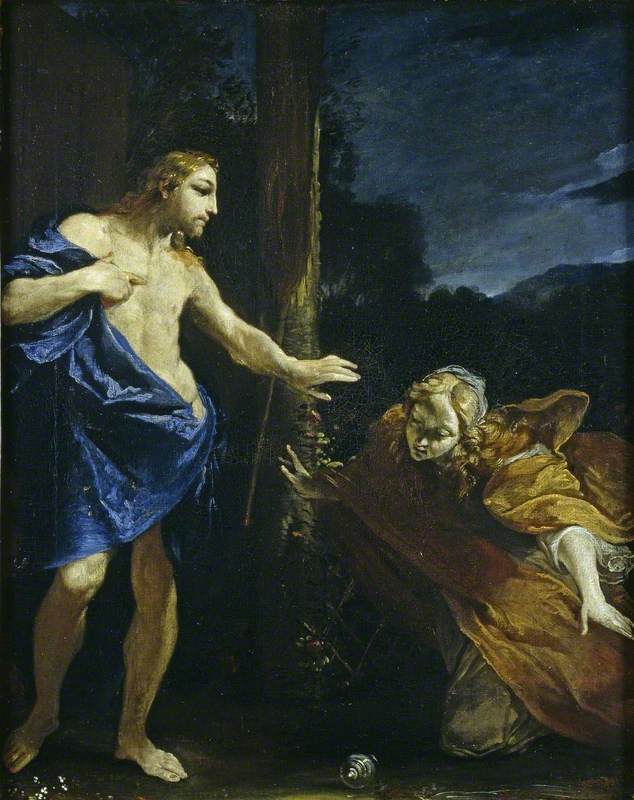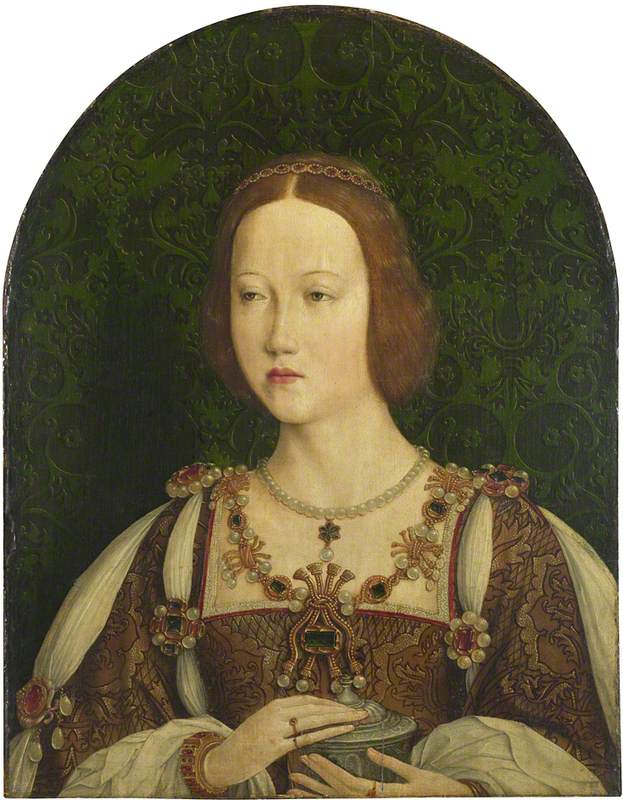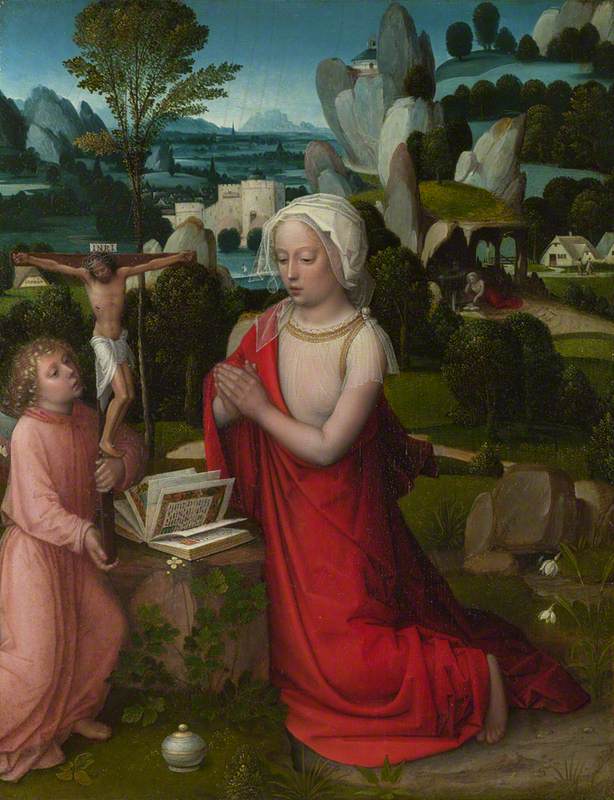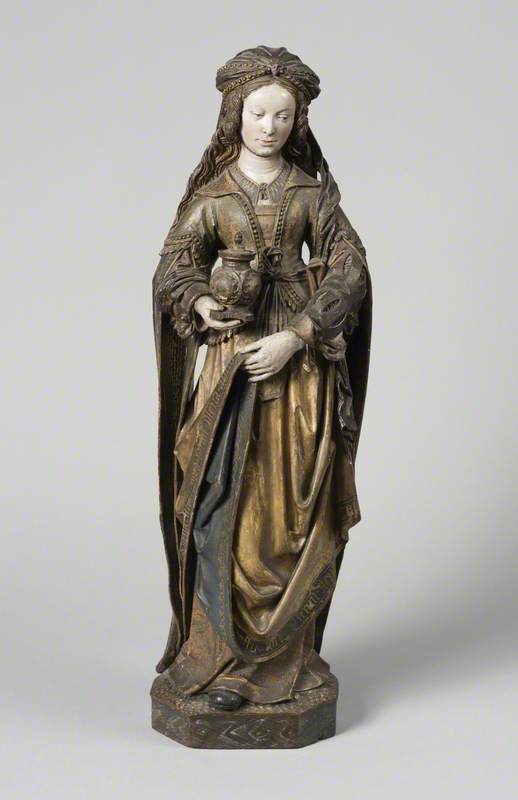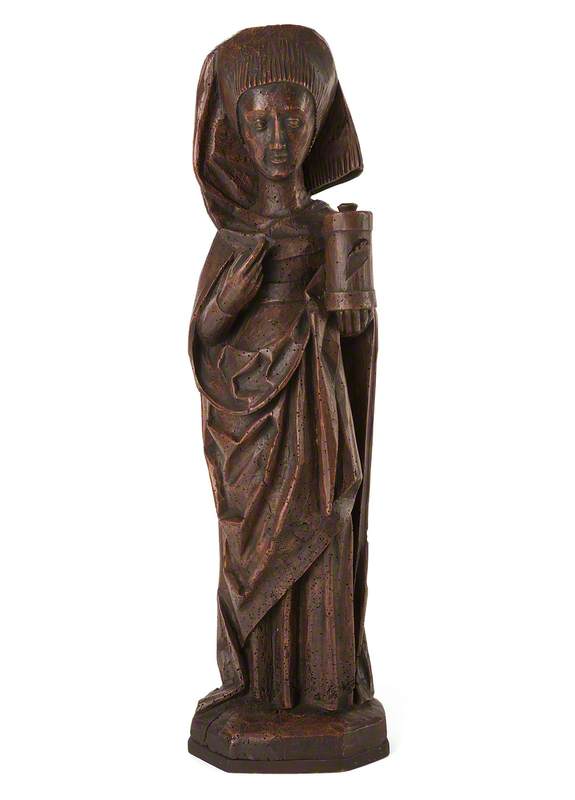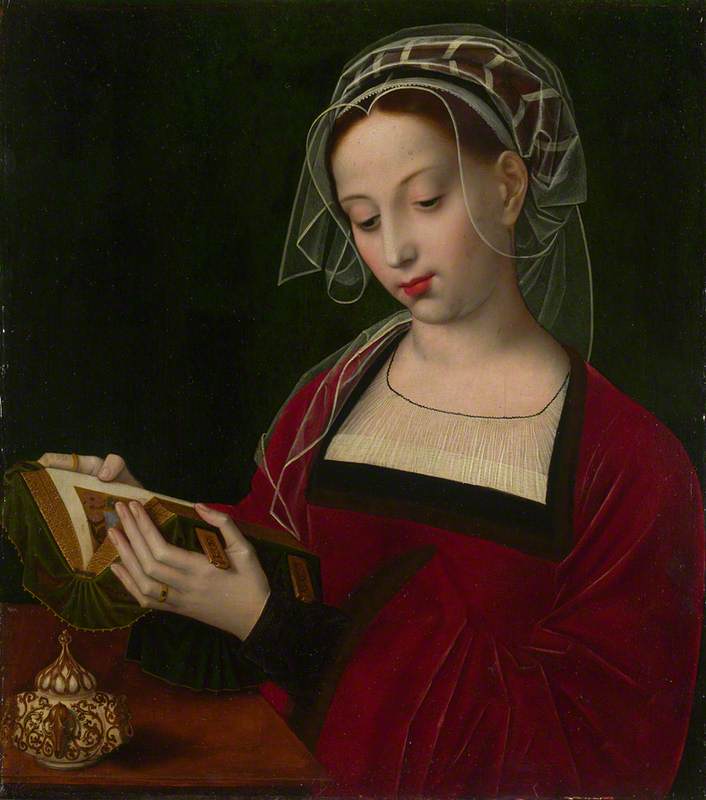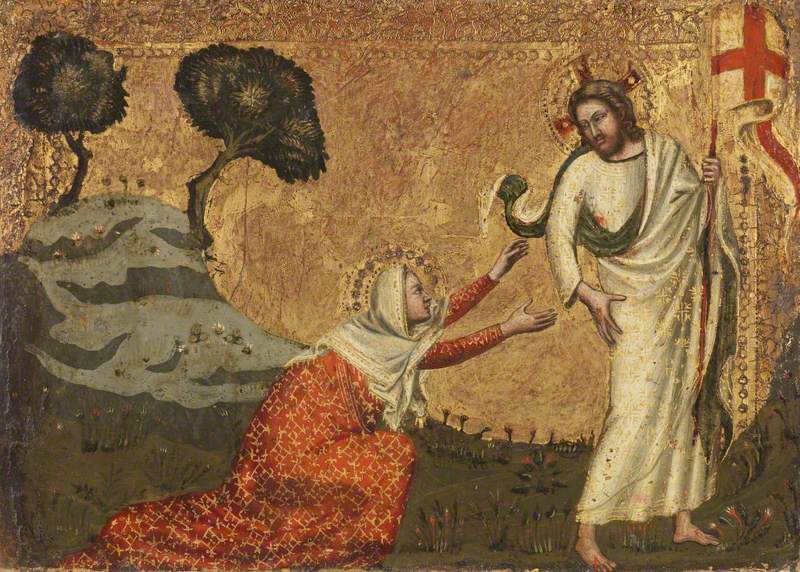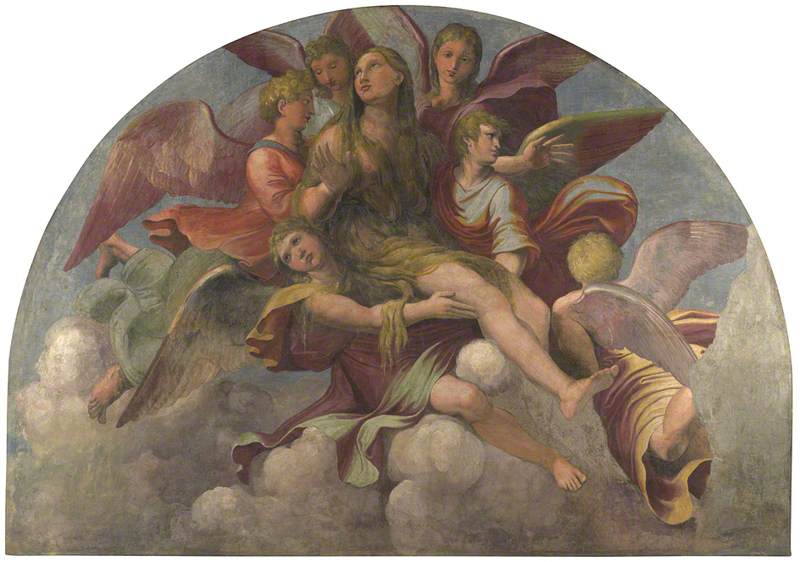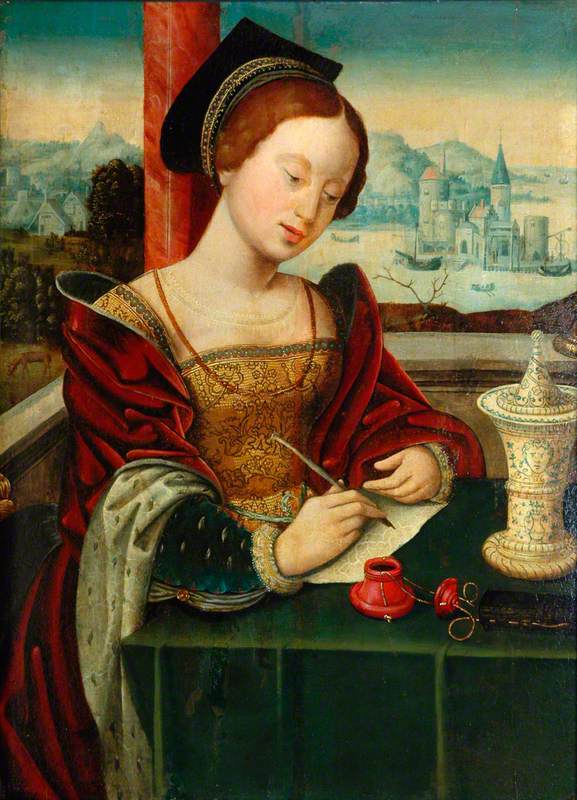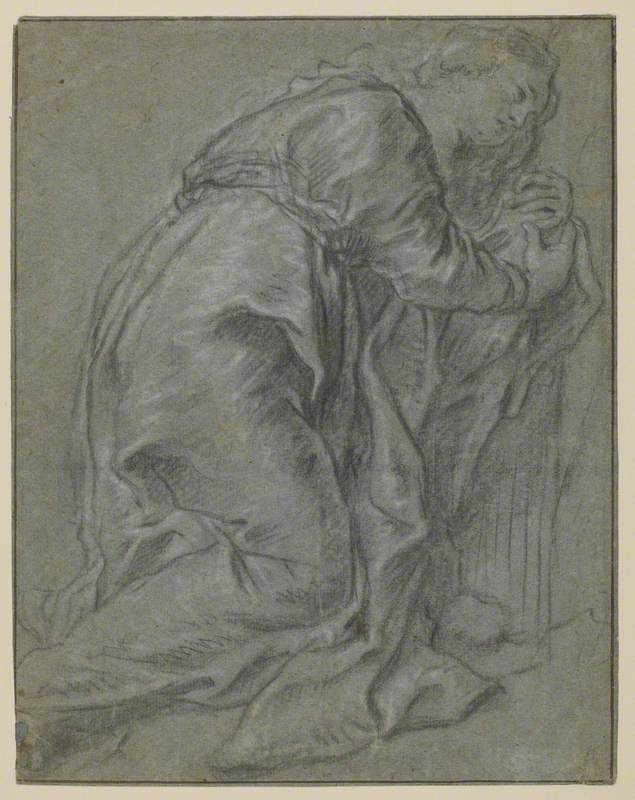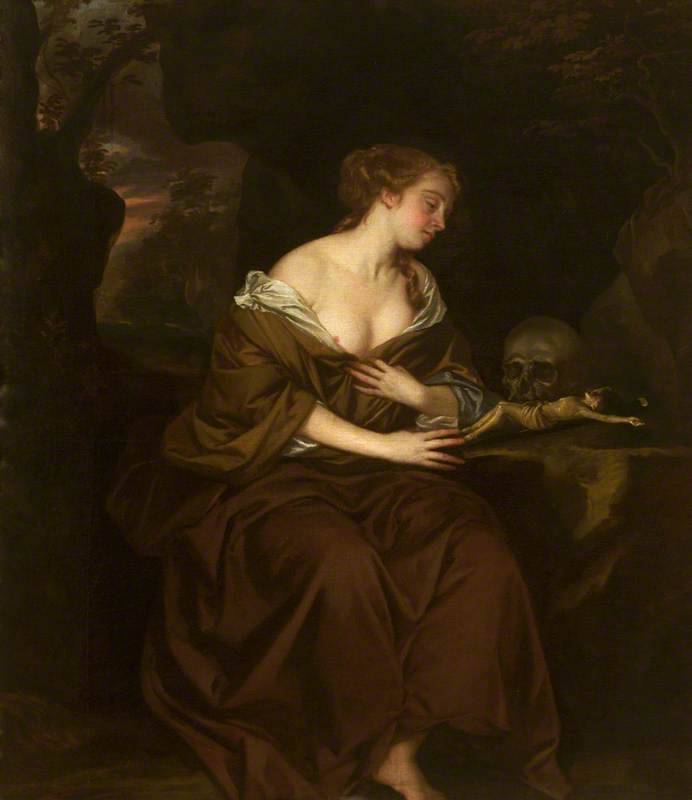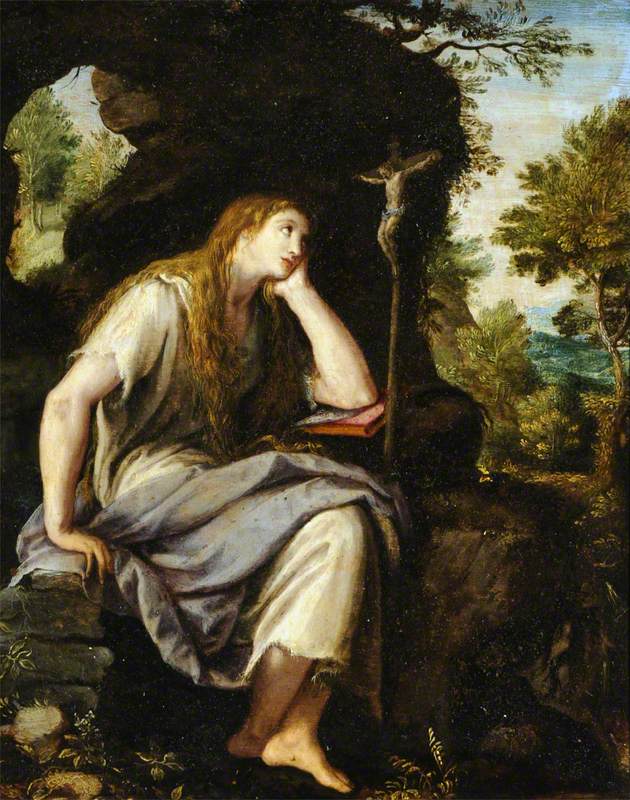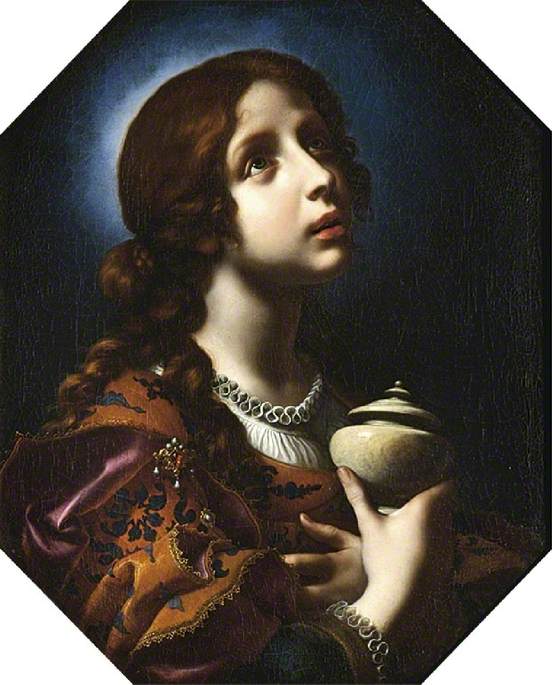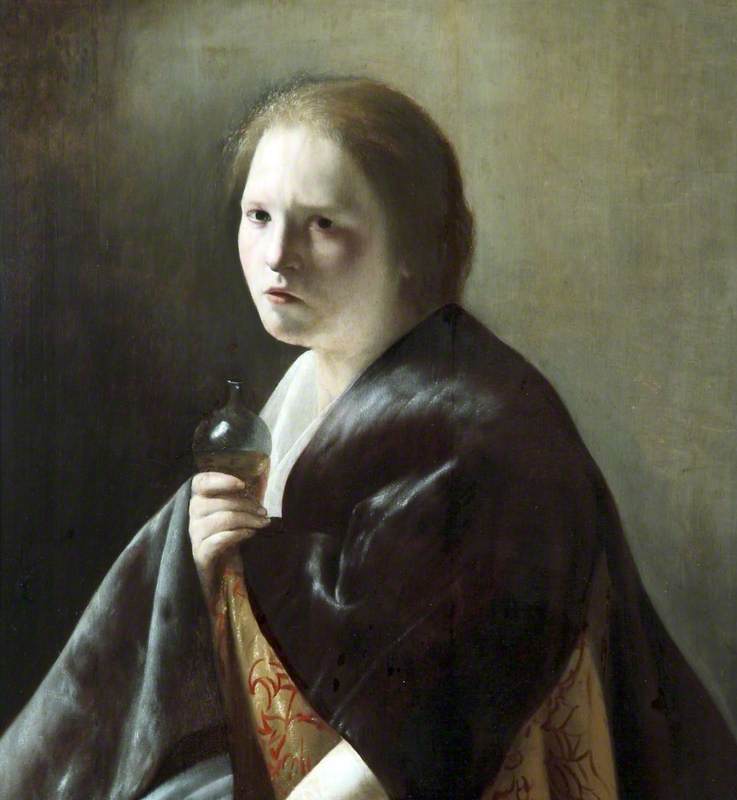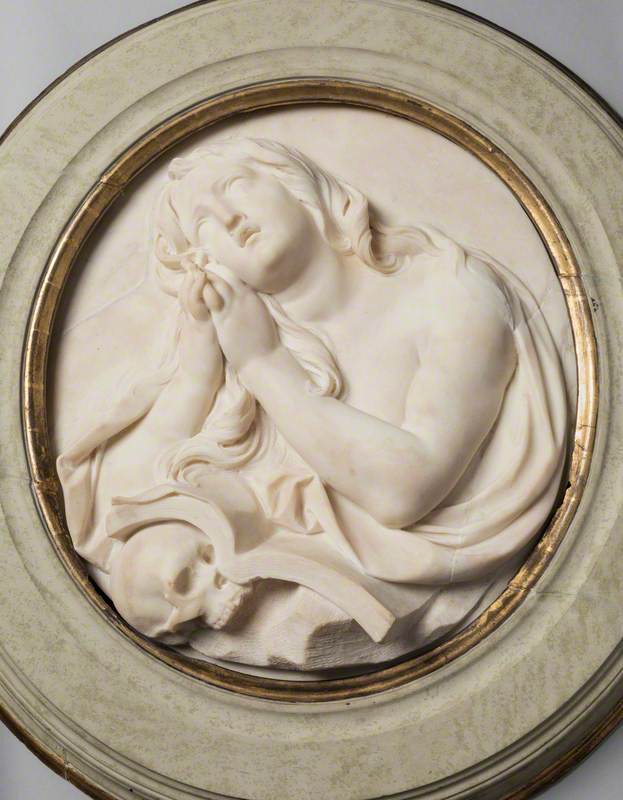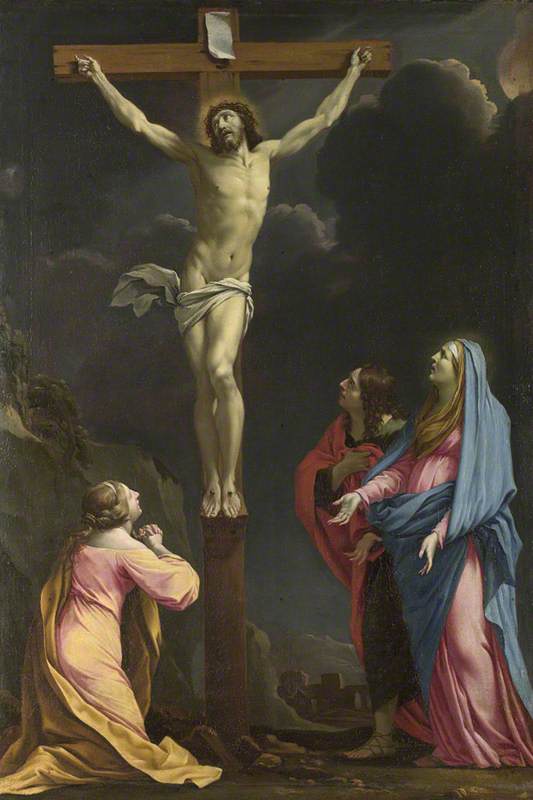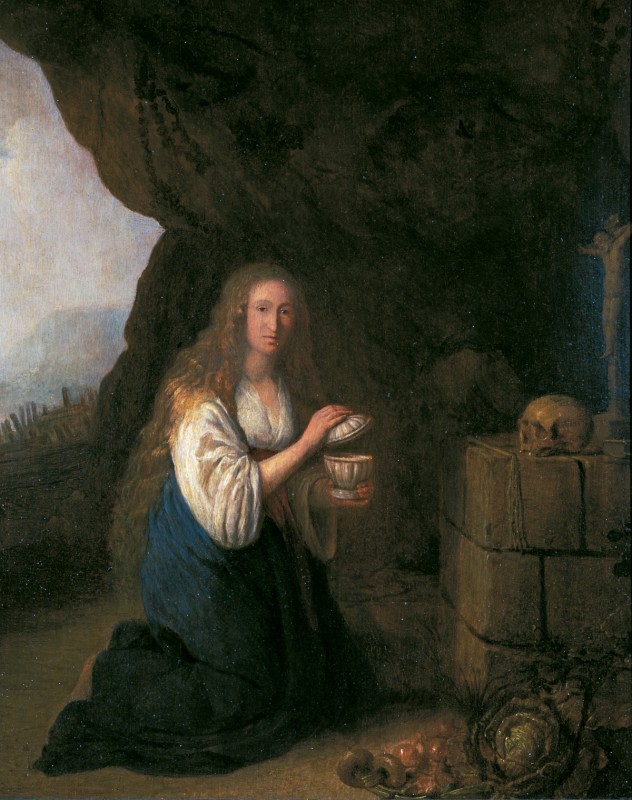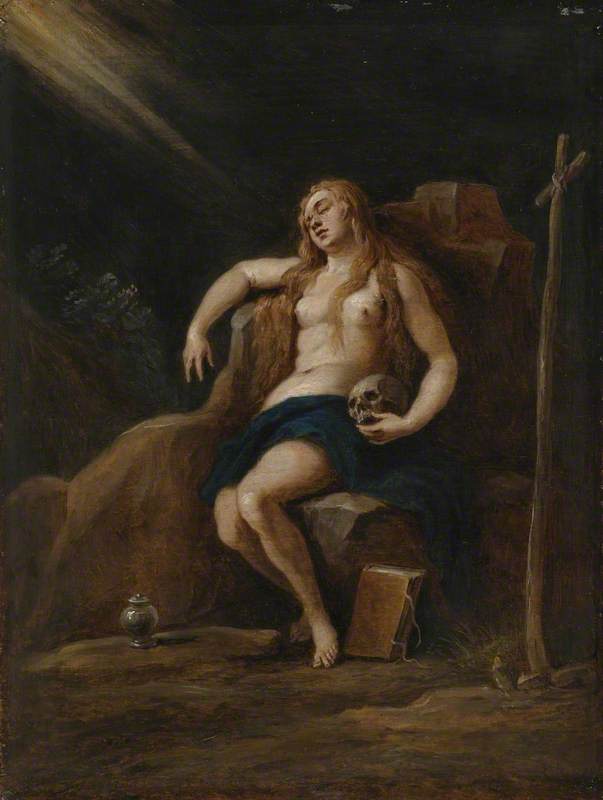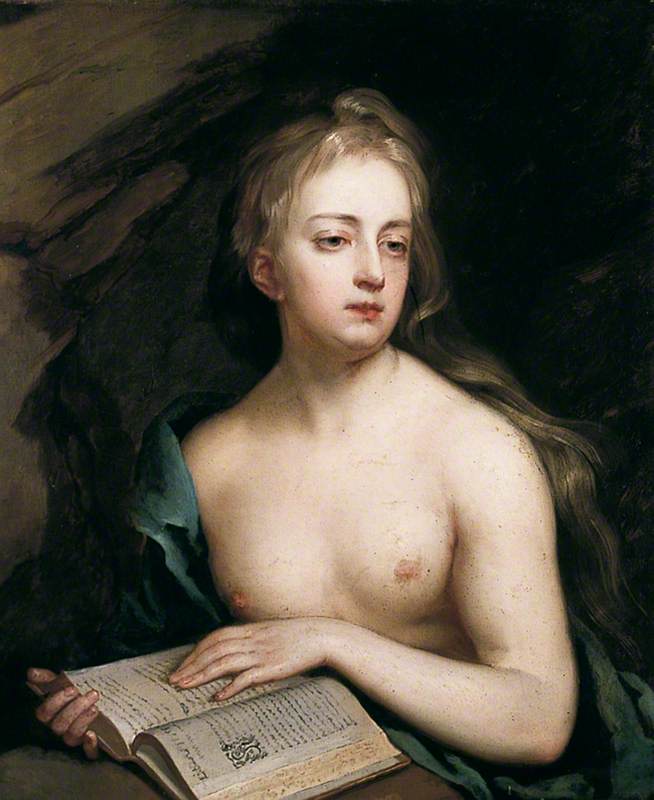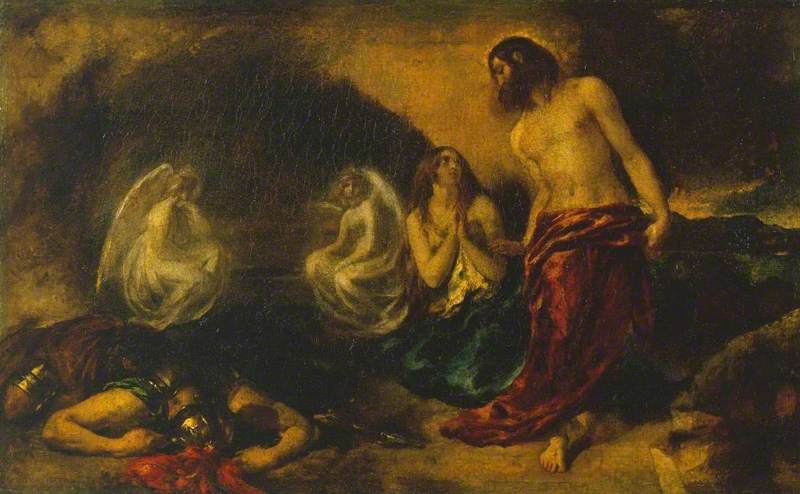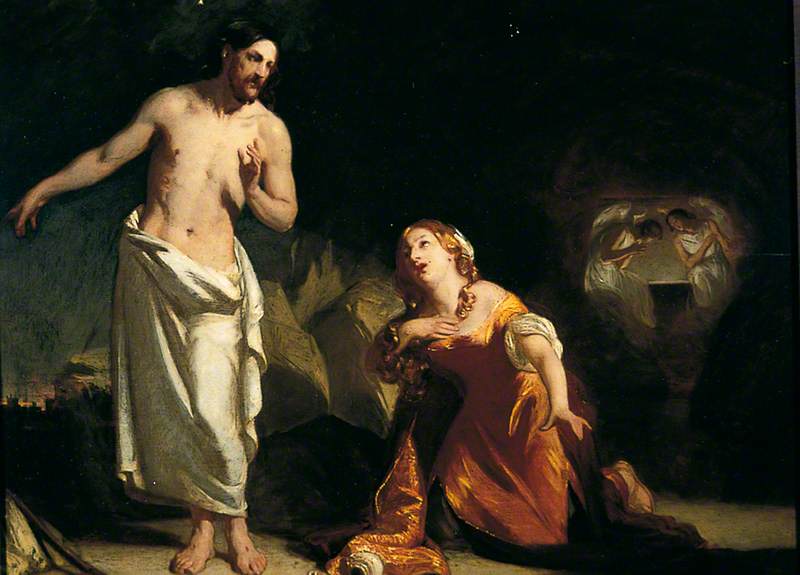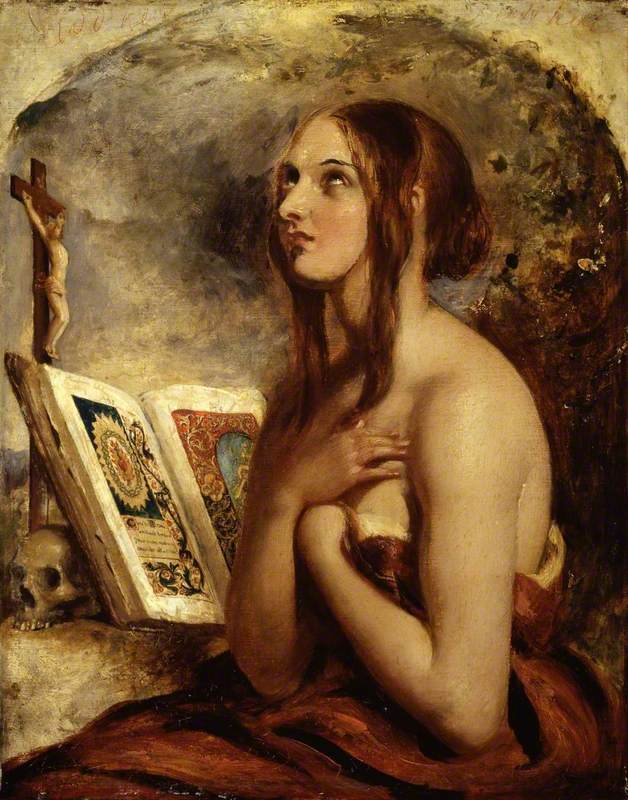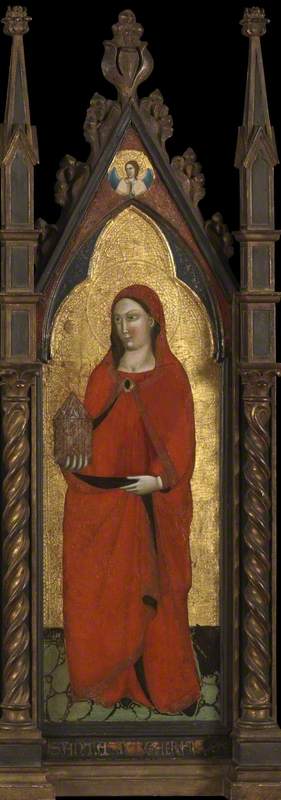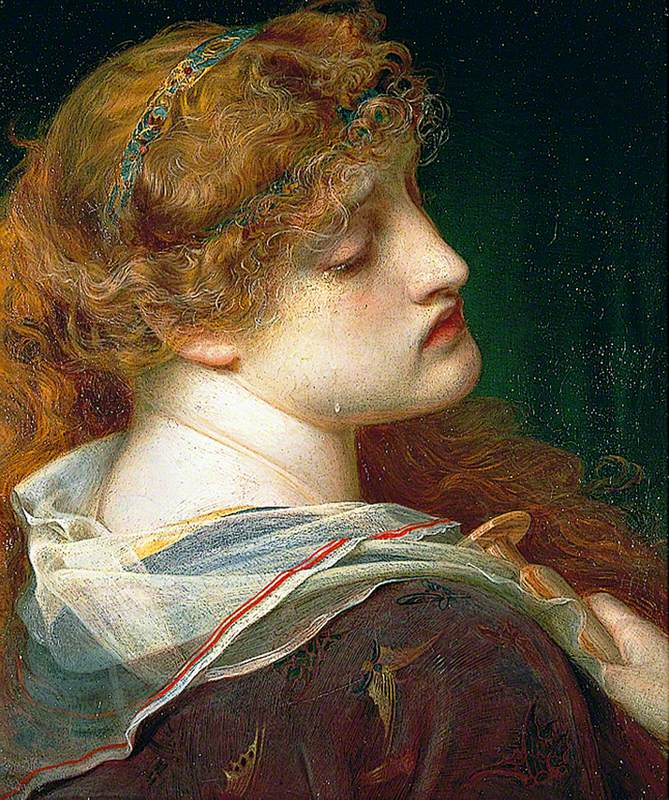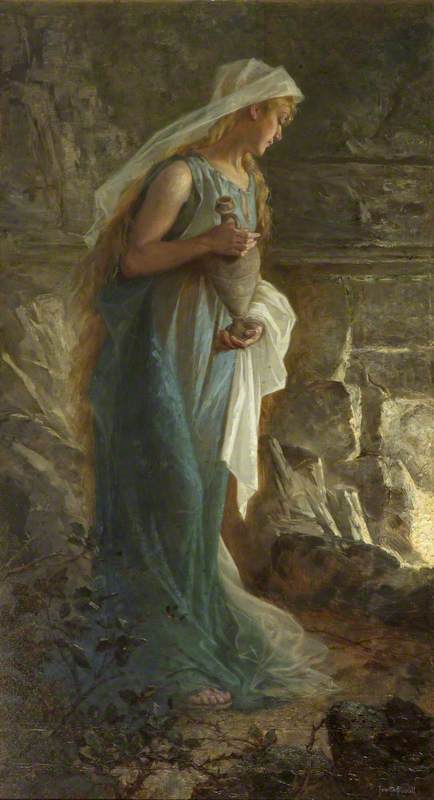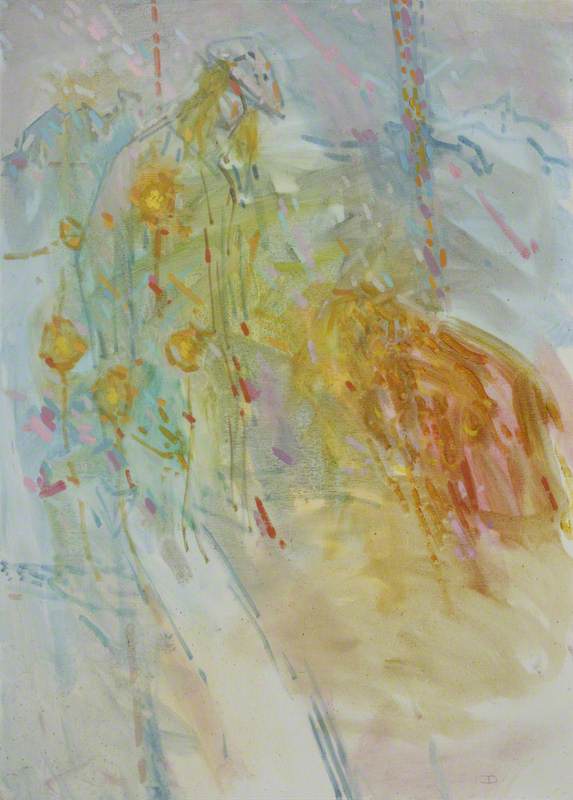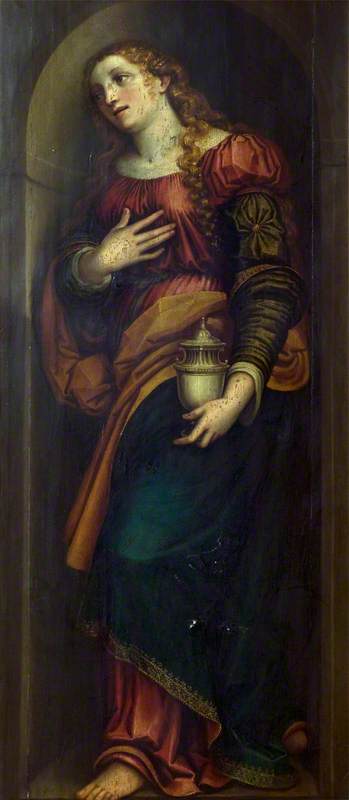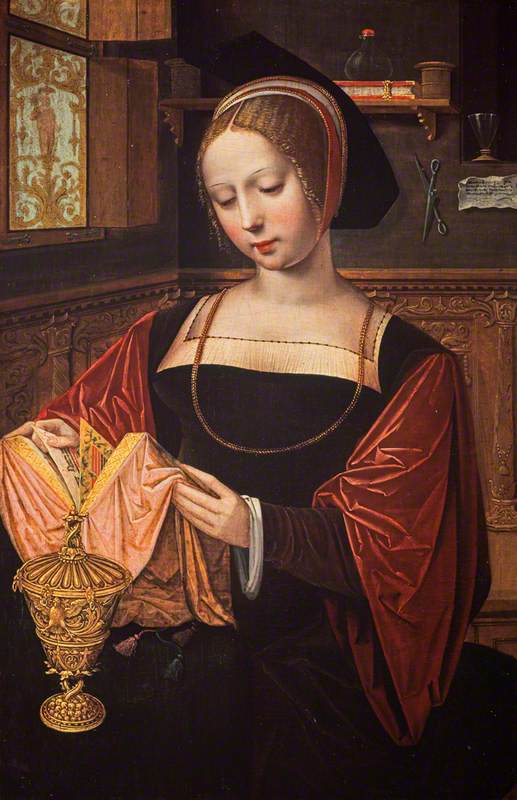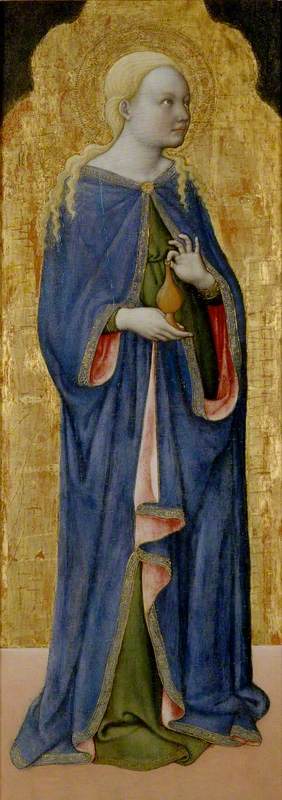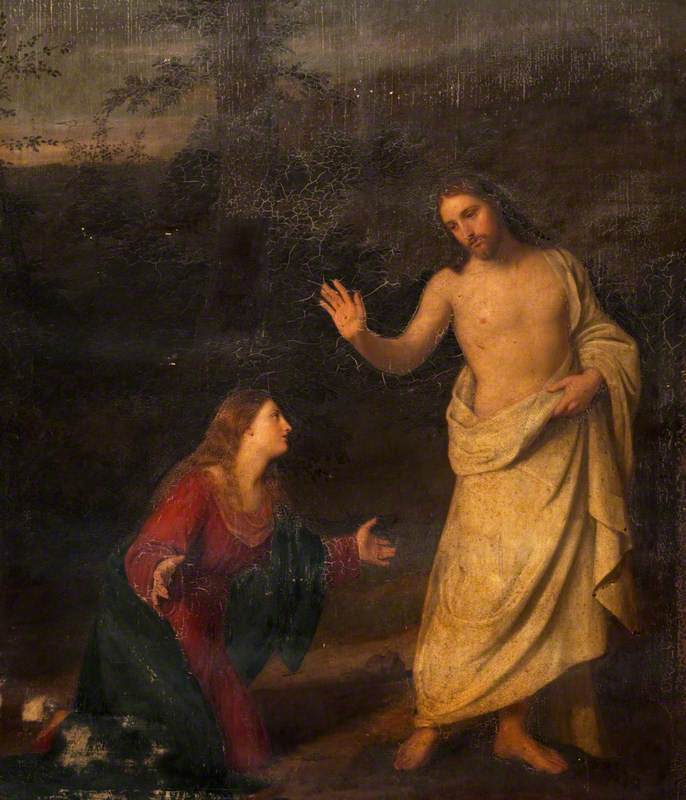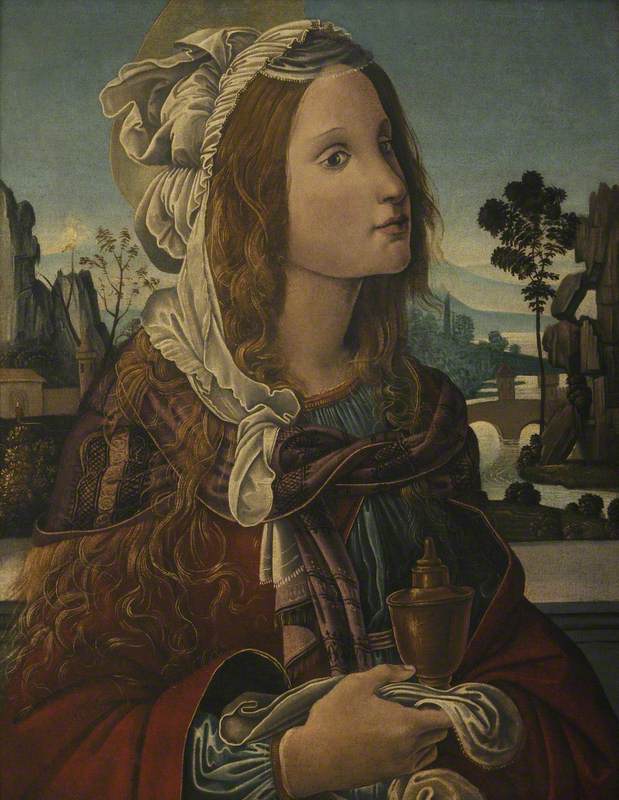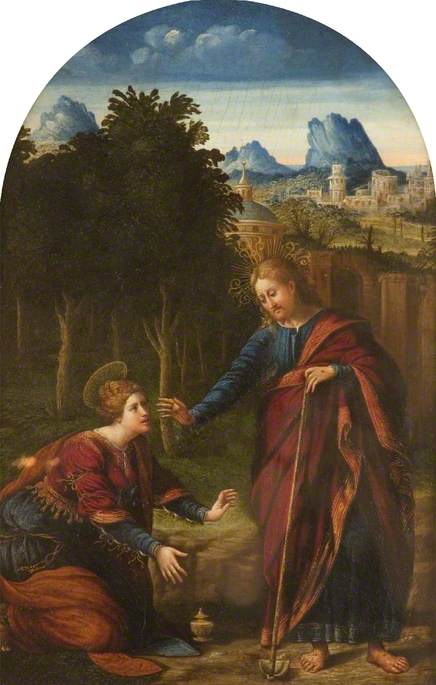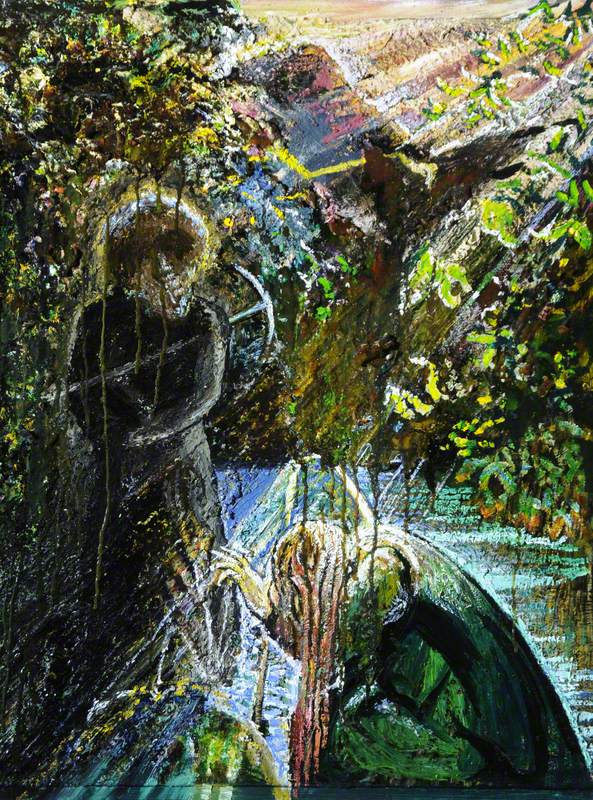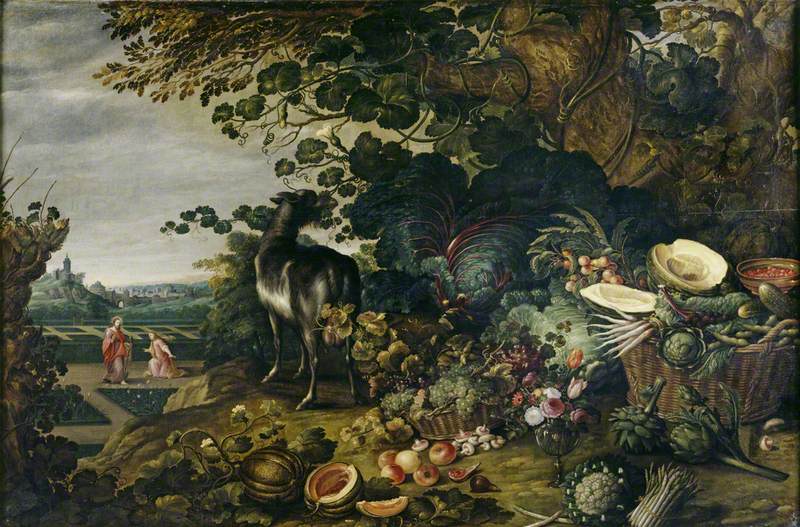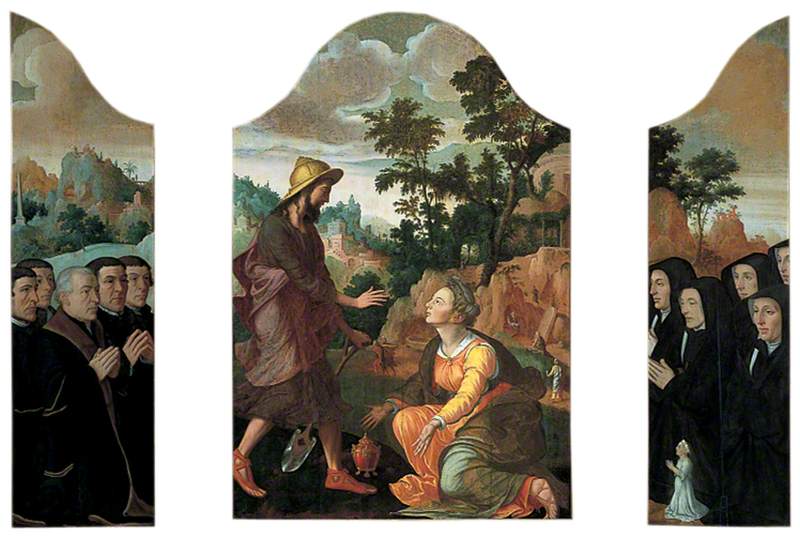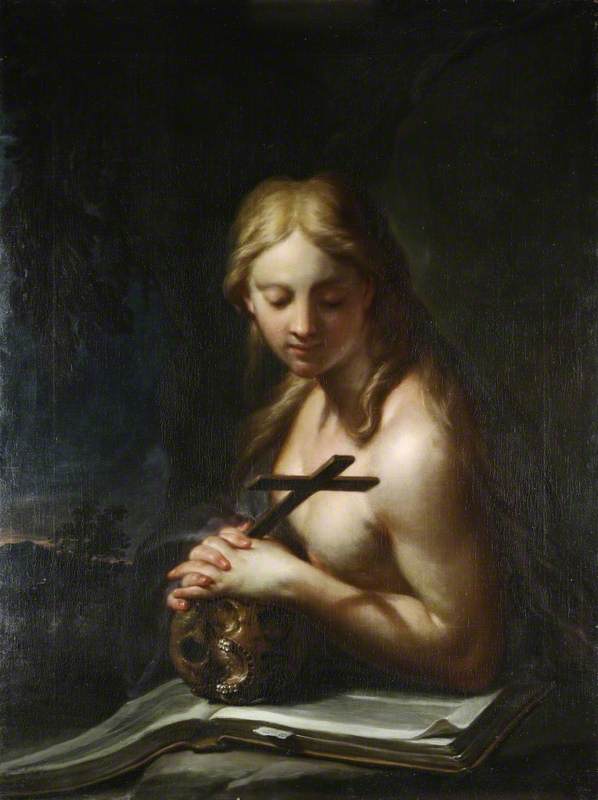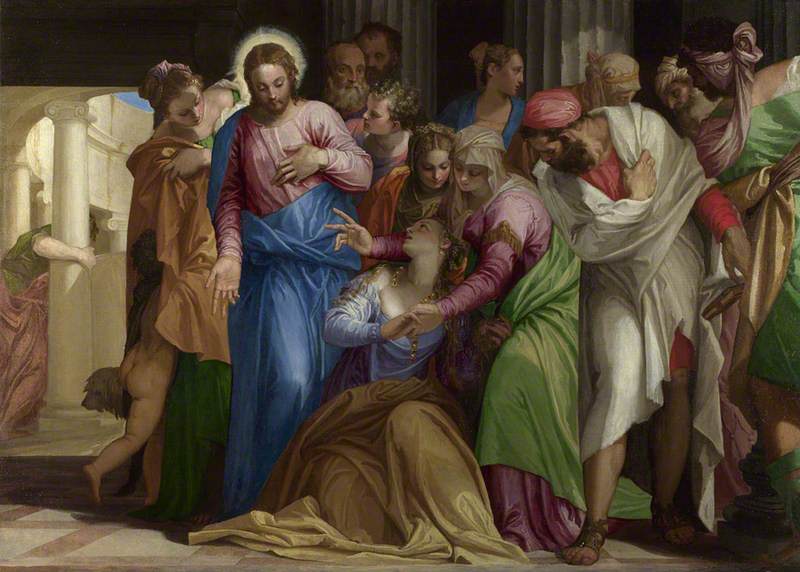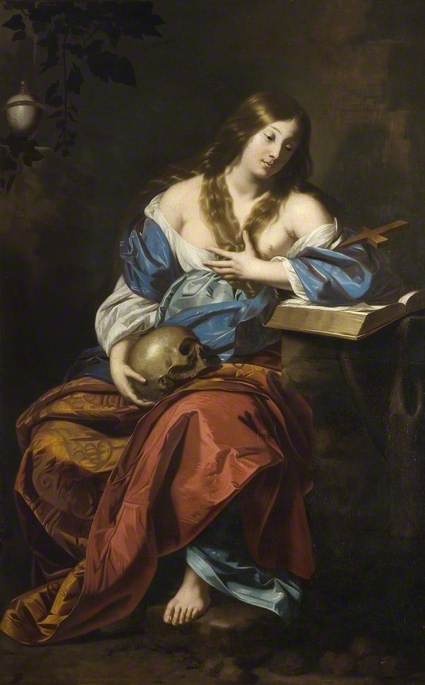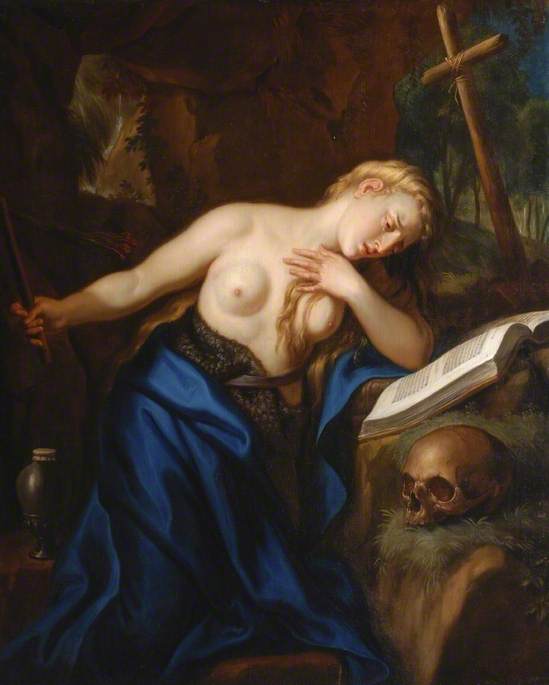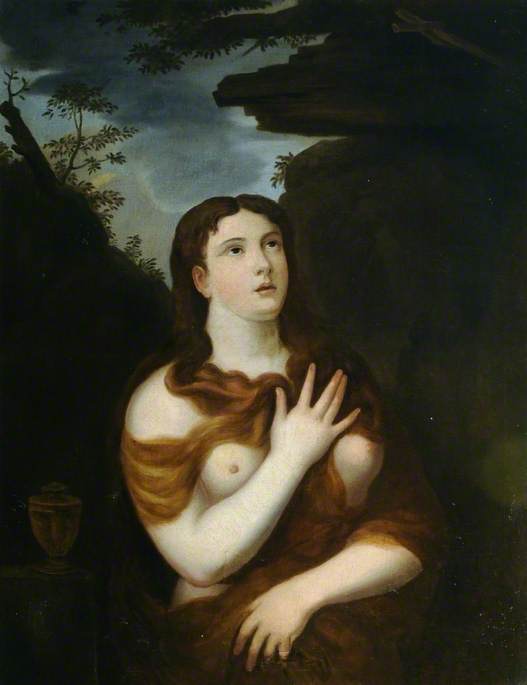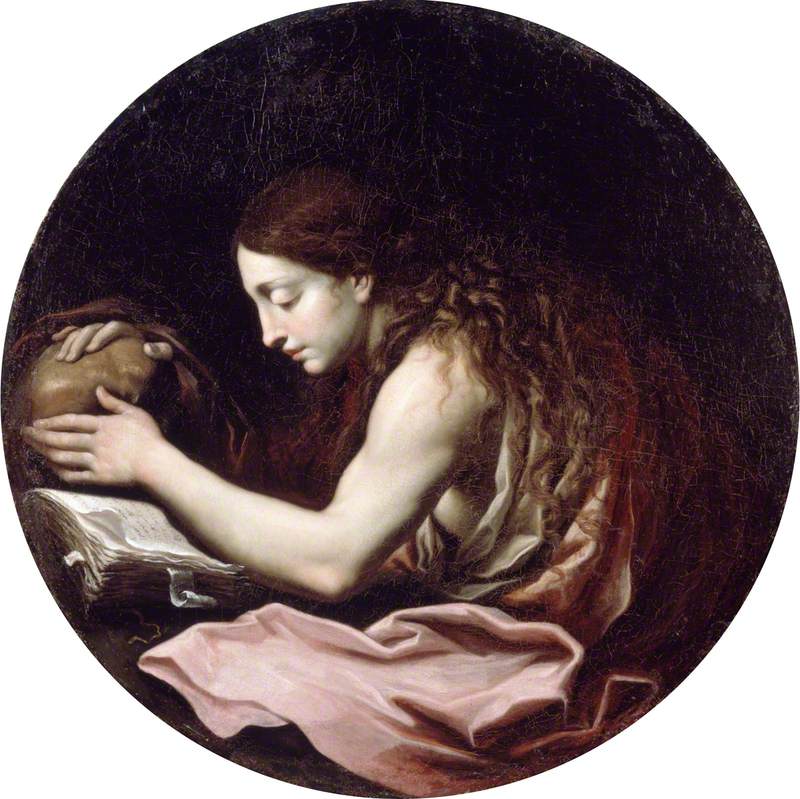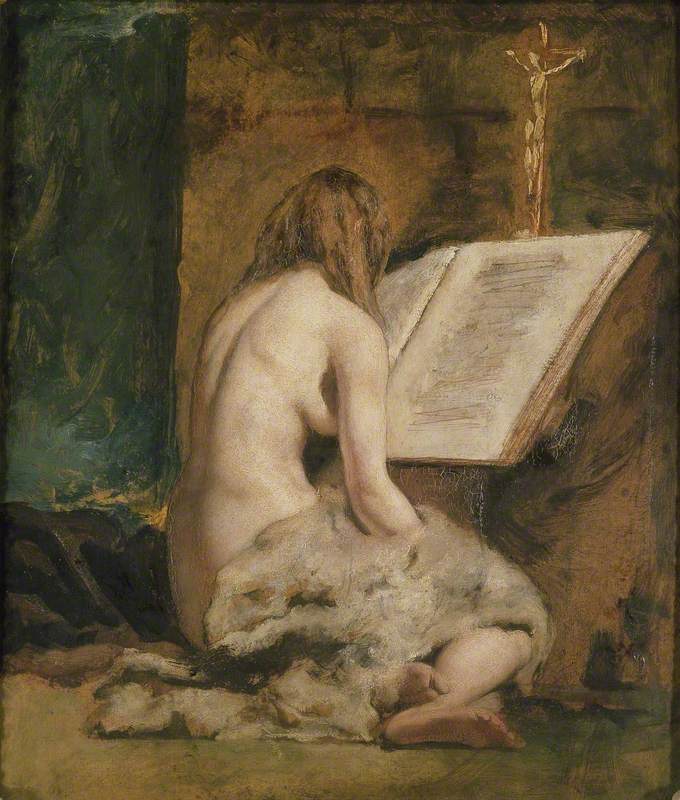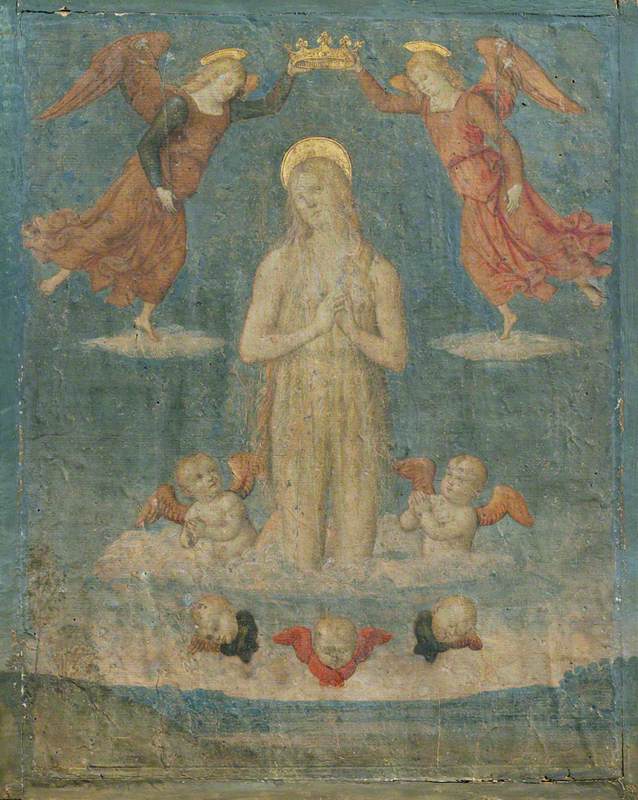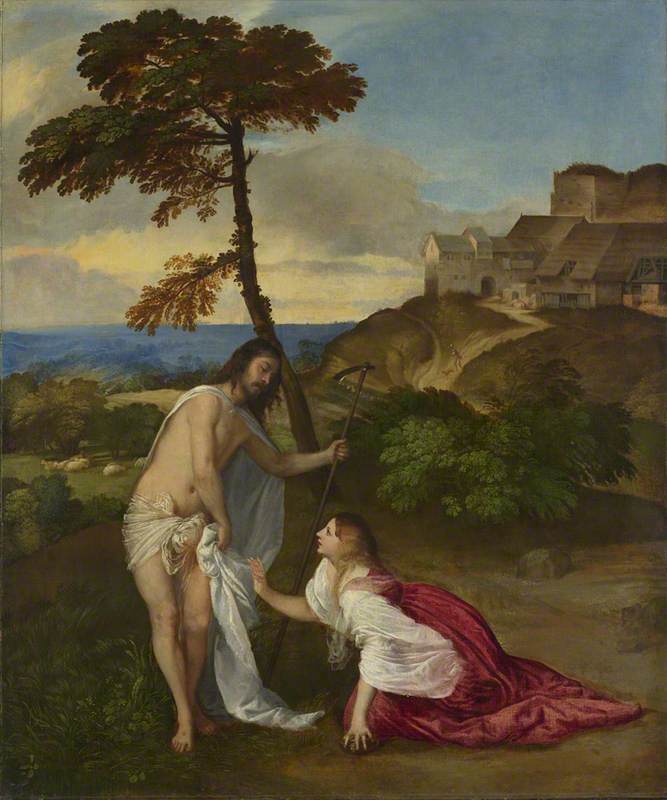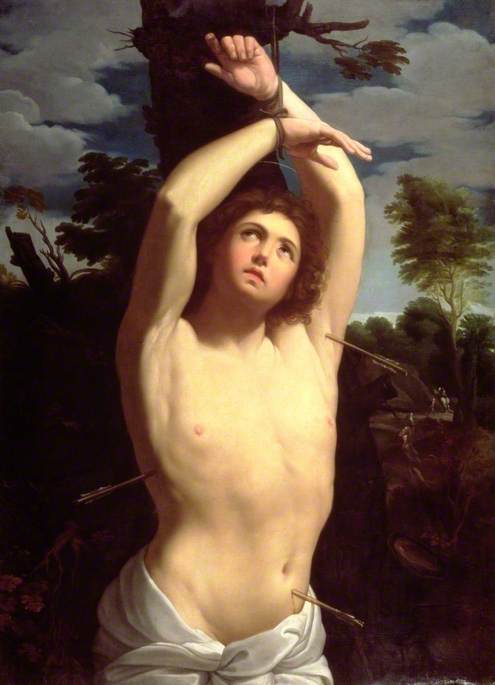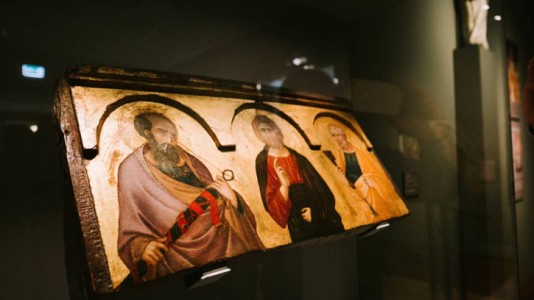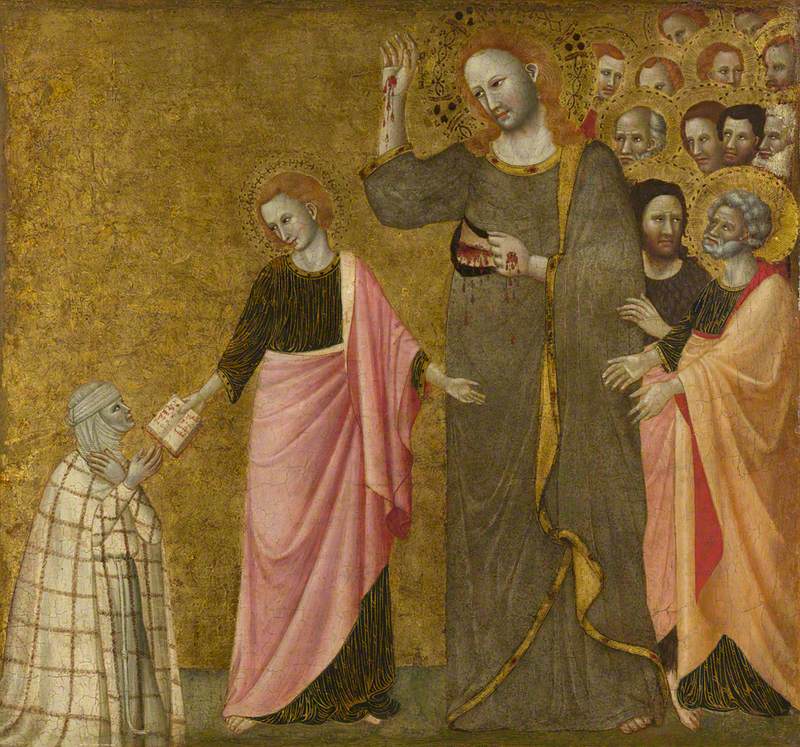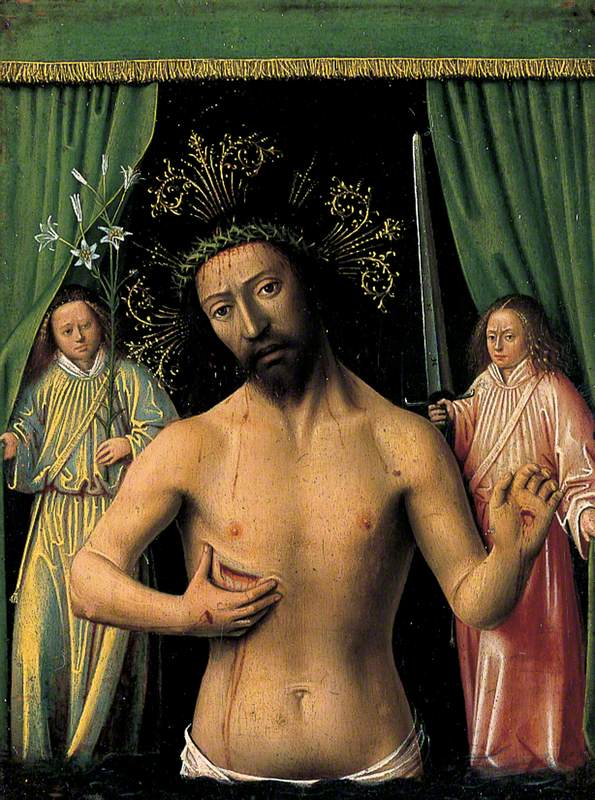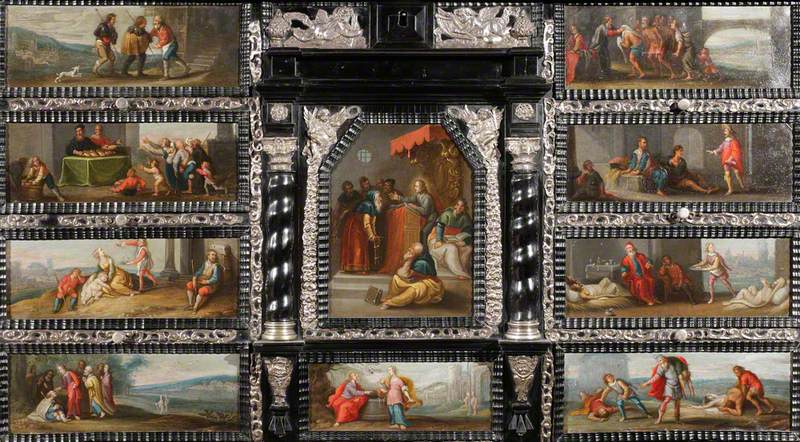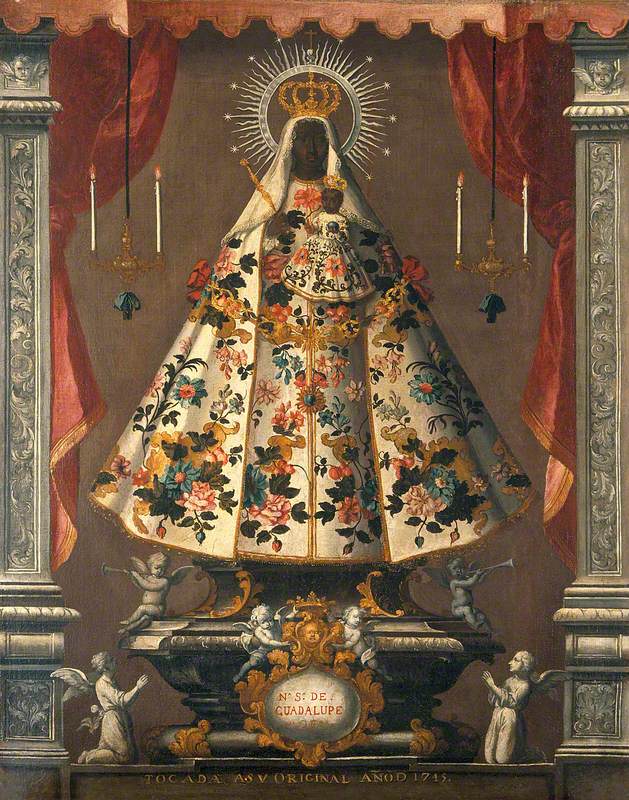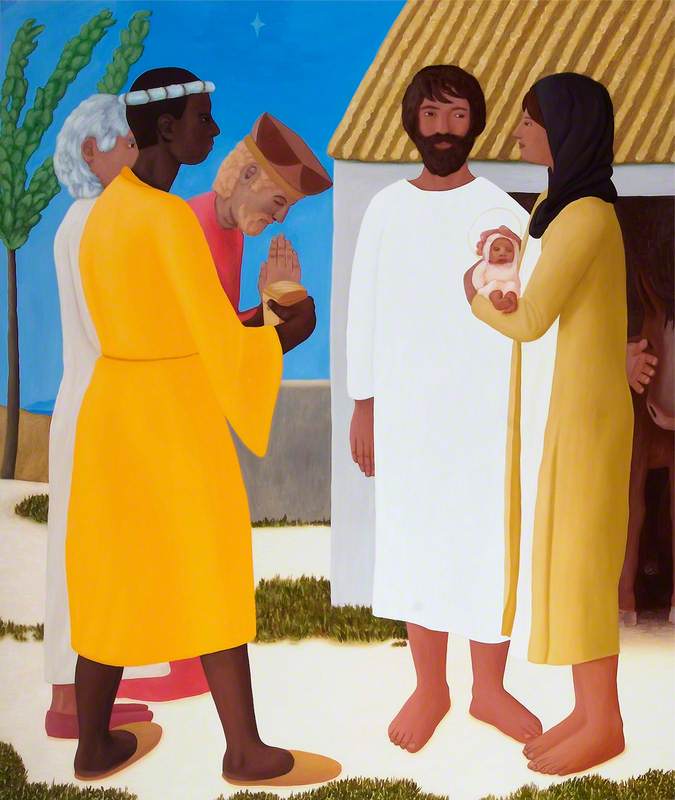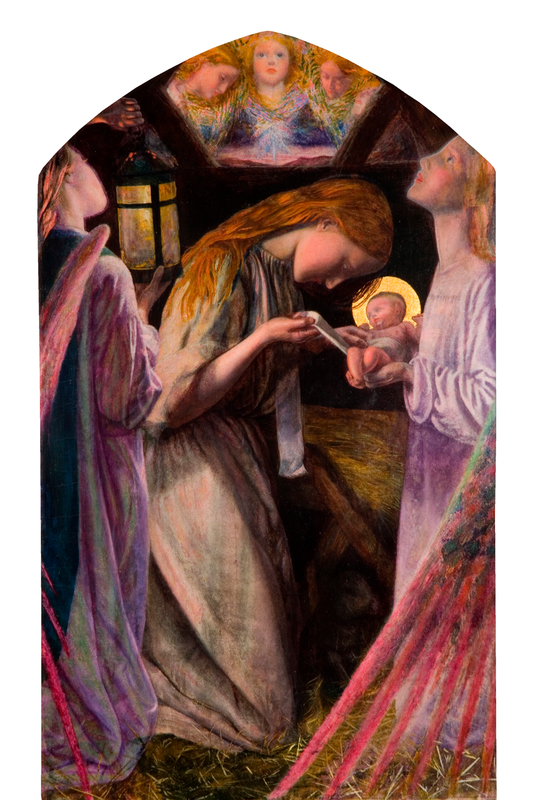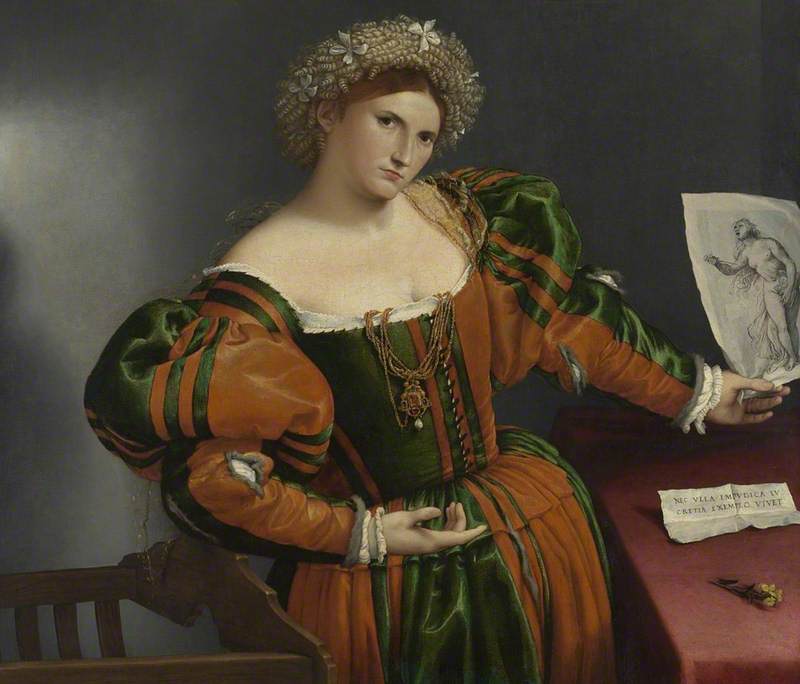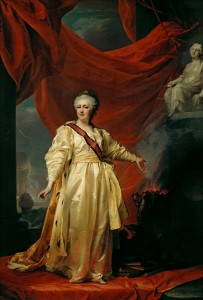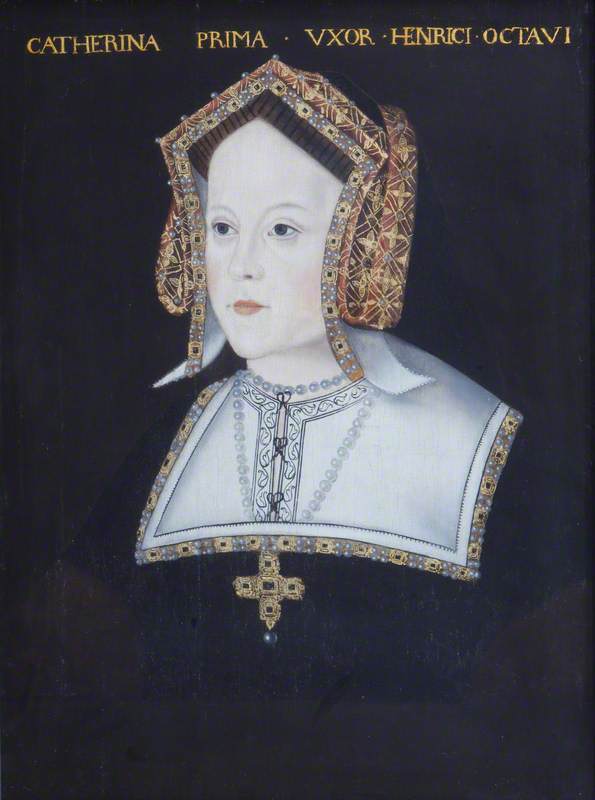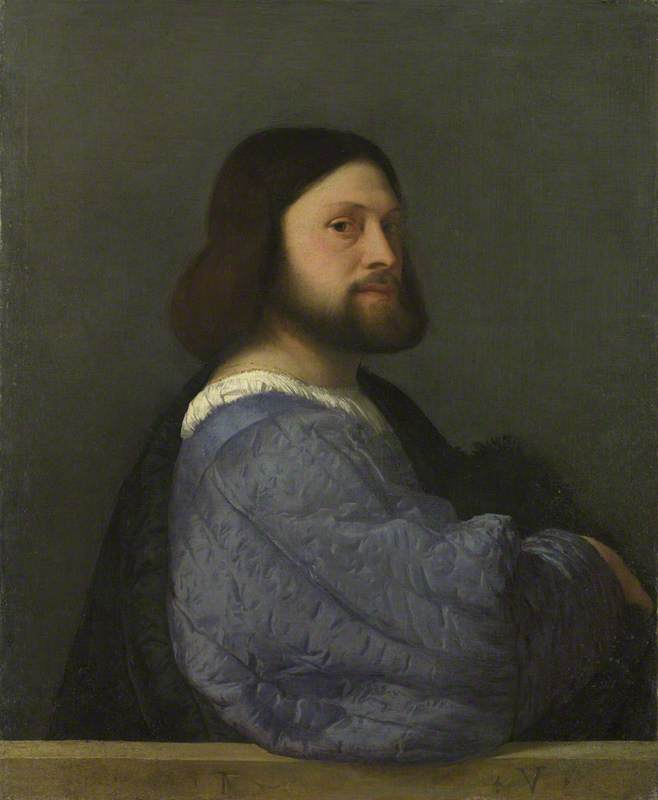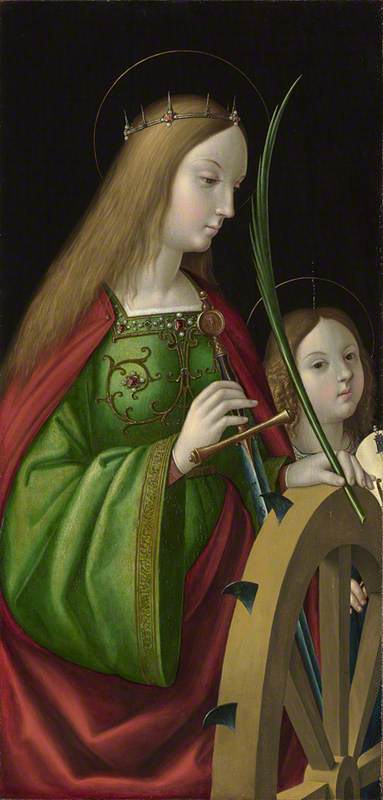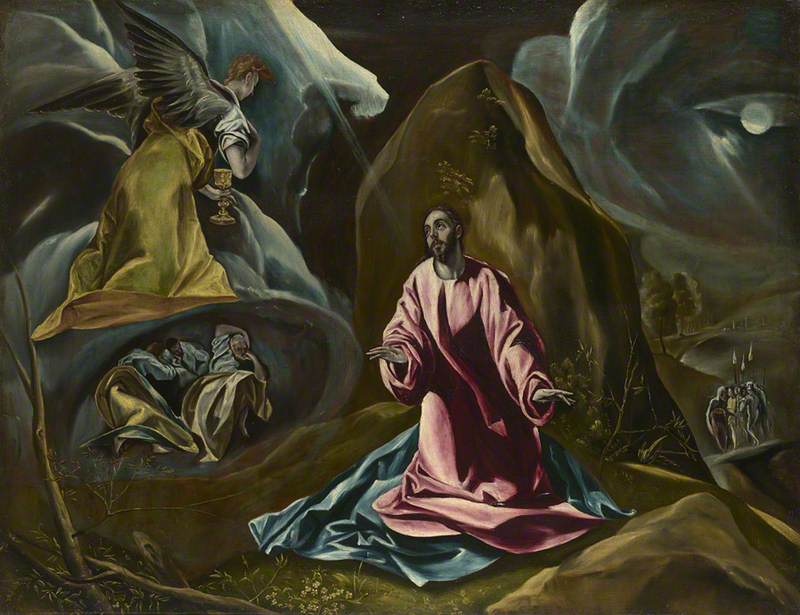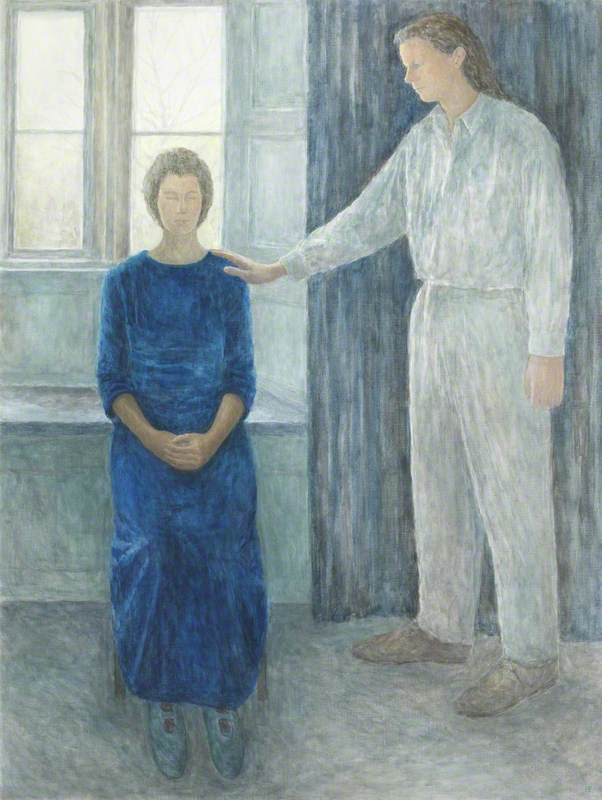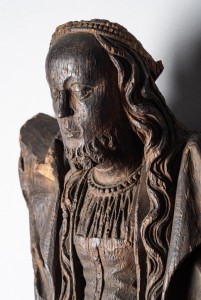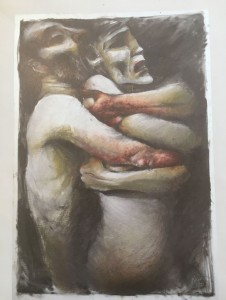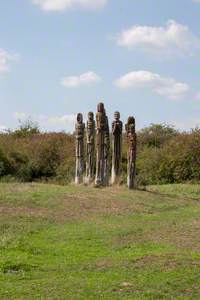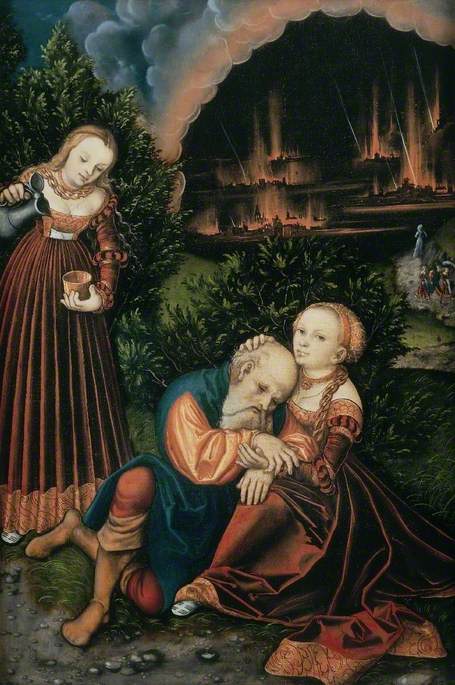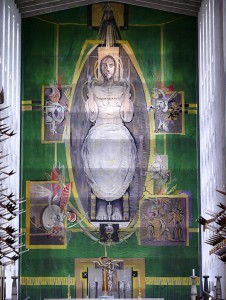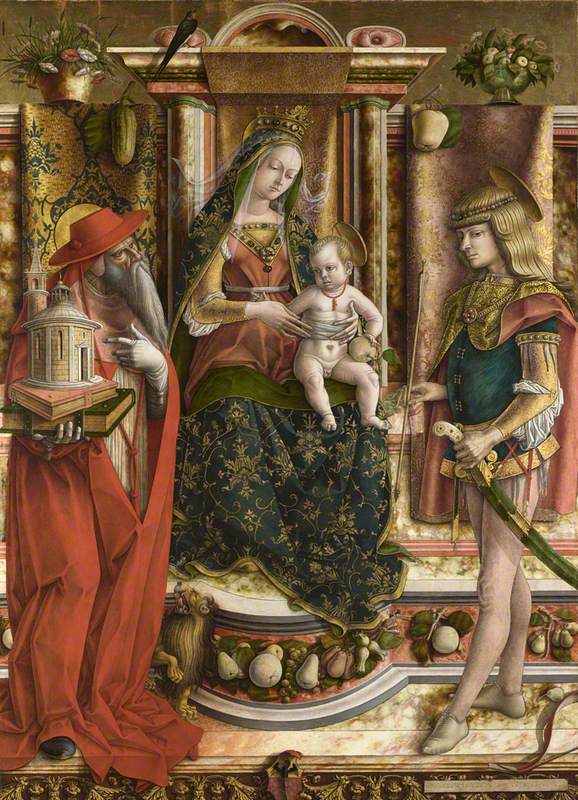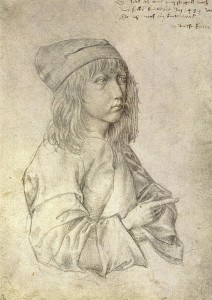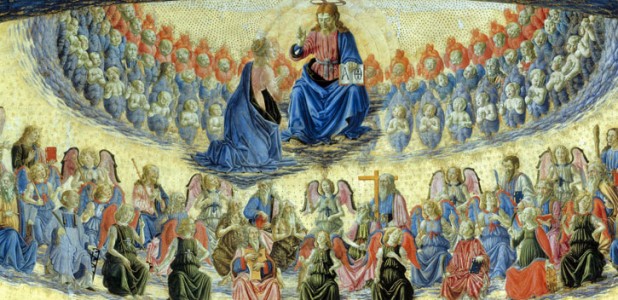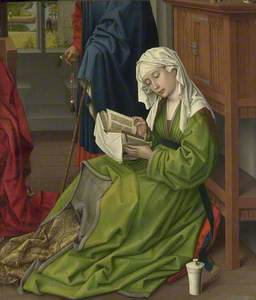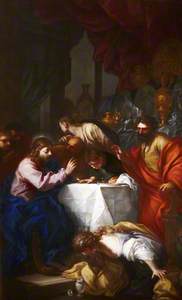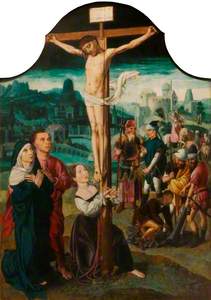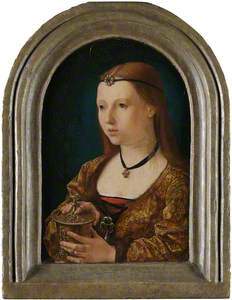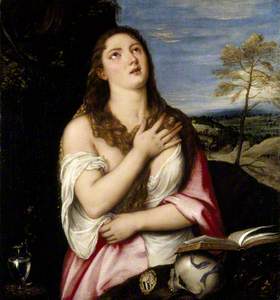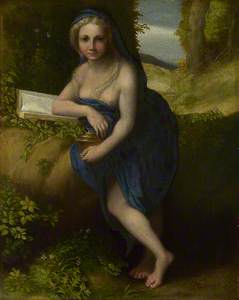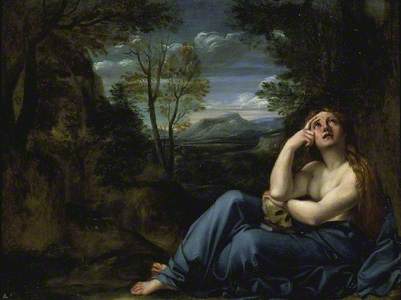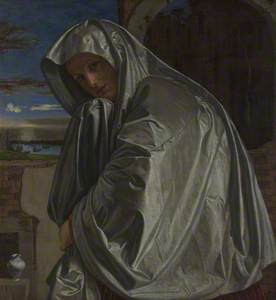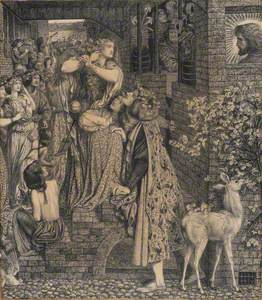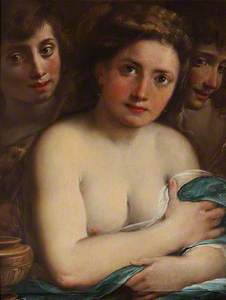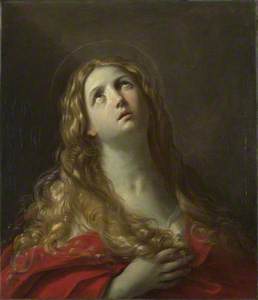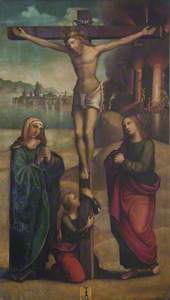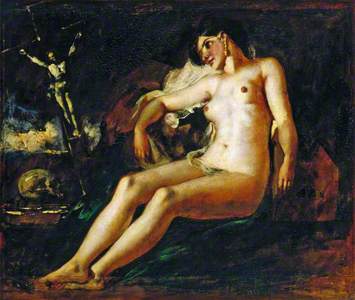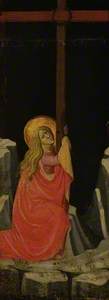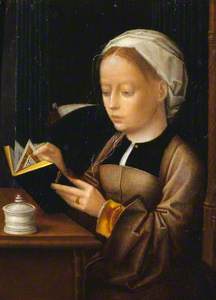In an episode of Britain's Lost Masterpieces first broadcast on BBC Four in early 2021, Bendor Grosvenor and Emma Dabiri visited Brighton Museum to investigate a grubby image of Mary Magdalene repenting her sins. The work was found to be by a forgotten master of the Roman Baroque, Francesco Trevisani, but the programme also related how a medieval pope confused the biblical accounts and gave Mary a completely invented personality.
Mary Magdalene has been an incredibly popular subject in western art. She is perhaps the most adaptable of all the figures mentioned in the Gospels, with tales both in the Bible and many legends that have grown outside of the sanctioned religious texts.
The scope of determining 'the real Mary Magdalene' is beyond this article – across the centuries she has been venerated as a saint, condemned as a sinner, labelled a prostitute, and even reimagined as Jesus' wife.
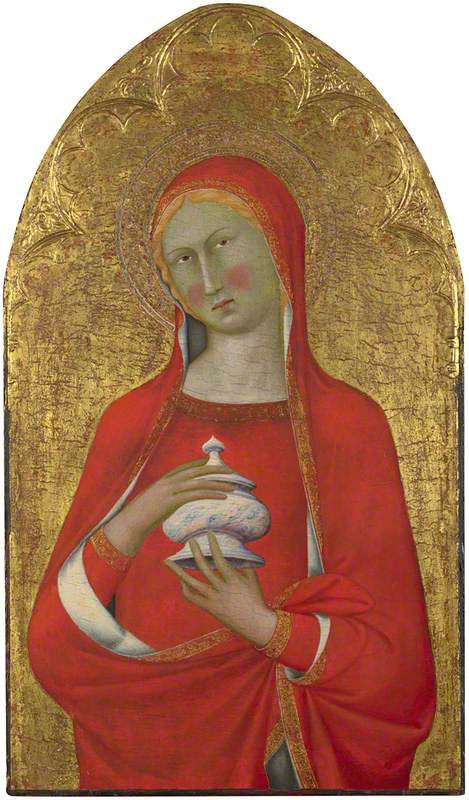
Image credit: The National Gallery, London
Saint Mary Magdalene about 1350?
Master of the Palazzo Venezia Madonna (active early 14th C–mid-14th C)
The National Gallery, LondonBut for at least the past thousand years she has been a figure represented by artists in very many ways (to use the words given to her by Tim Rice and Andrew Lloyd Webber in Jesus Christ Superstar).
Artists have naturally reflected the concerns of their own times in their depictions of Mary Magdalene, but there are some consistent tropes that span hundreds of years, and specific scenes – both in the Gospels and imagined – that crop up time and again.
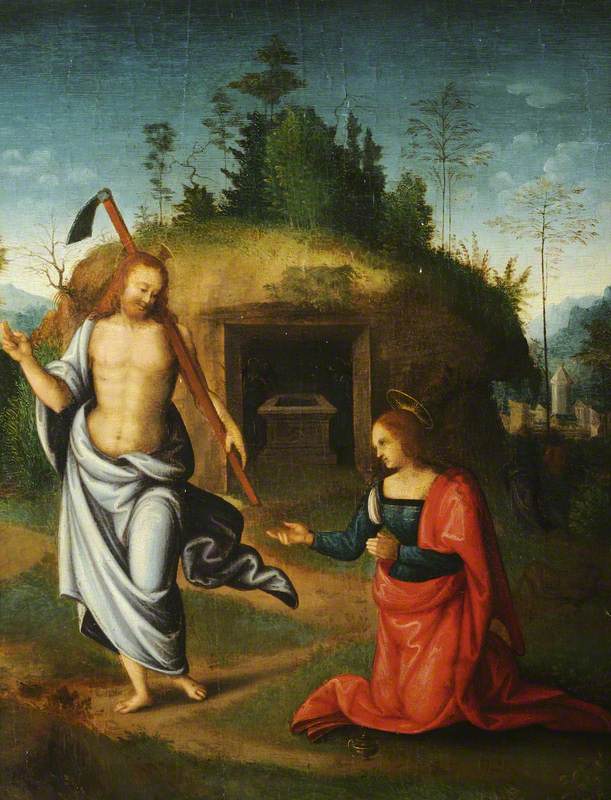
Image credit: Christ Church, University of Oxford
Christ Appearing to the Magdalen c.1515–1520
Bacchiacca (1494–1557)
Christ Church, University of OxfordA quick note on spelling and pronunciation: Mary Magdalene was also known as Mary of Magdala (a place) and simply 'The Magdalen' (both with and without a final 'e'). For any fans of University Challenge, the pronunciation of the two Oxbridge colleges named in the saint's honour might also seem peculiar.
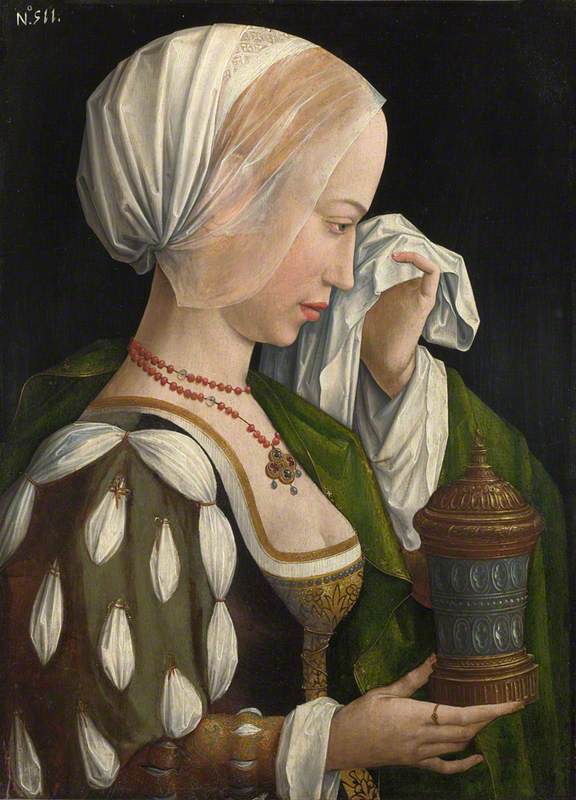
Image credit: The National Gallery, London
The Magdalen Weeping about 1525
Master of the Magdalen Legend (c.1483–c.1530) (studio of)
The National Gallery, LondonAs Magdalene College, Cambridge state: 'Though spelt in the biblical and continental way, 'Magdalene', the College name is pronounced 'Maudlyn'... the College was refound by Lord Audley in 1542... in many early documents, the name is clearly spelt as pronounced: 'Maudleyn', containing within it the name of Audley. The final 'e' on Magdalene was an attempt, with the advent of the postal service in the mid nineteenth-century, to distinguish Magdalene Cambridge from our sister College, Magdalen Oxford.'

Image credit: Magdalen College, University of Oxford
William of Waynflete (1398–1486), Bishop of Winchester (1447–1486), Founder of Magdalen
Richard Greenbury (c.1600–1670)
Magdalen College, University of OxfordOxford's Magdalen College also blame the pronunciation on their founder: 'Waynflete decreed that his College should be known as 'Collegium beatae Mariae Magdalenae' in Latin and 'Maudelayne College' in English. In the 15th century, English speakers called Mary Magdalene 'Mary Maudelayne' (or 'Mawdelayne')... It was only later that we put the 'g' back.'
Back to the art. In the western tradition Mary Magdalene is shown with a few key attributes – props to show the viewer who was being depicted – that occur frequently and are related to various parts of her story. So it's important to try to understand how she fits into the story of Jesus to see what artists were trying to achieve by depicting her.
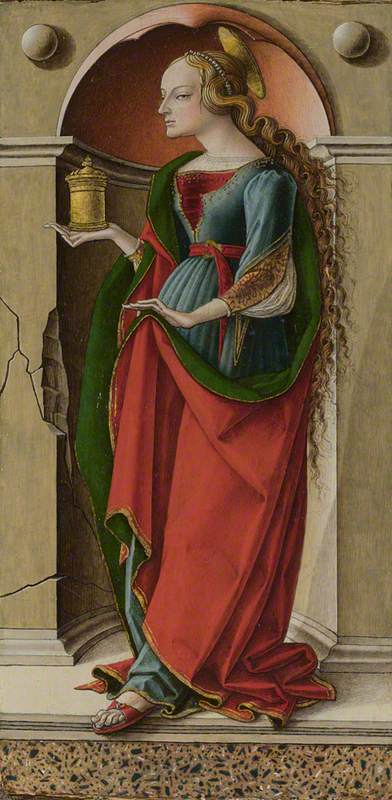
Image credit: The National Gallery, London
Saint Mary Magdalene probably about 1491-4
Carlo Crivelli (c.1430–c.1495)
The National Gallery, LondonQuite often, Mary Magdalene wears red, as opposed to the blue traditionally reserved for the Virgin Mary. But this in itself highlights another problem.
The four Gospels mention several women named Mary, including the mother of Jesus, Mary Magdalene and Mary of Bethany (it was a very popular name!). Sometimes these women have been conflated, and sometimes separated out, with different theologians or theorists favouring one or other interpretation.

Image credit: National Trust Images
Christ and Mary Magdalene in the House of Simon c.1693
Benedetto Luti (1666–1724)
National Trust, Kedleston Hall and Eastern MuseumHowever, in all four Gospels, Mary Magdalene is a witness to Jesus' crucifixion.

Image credit: Victoria and Albert Museum, London
The Crucifixion with Mary Magdalen at the Foot of the Cross (triptych, centre panel) c.1500
Flemish (Bruges) School
Paintings CollectionShe is also present at Jesus' burial in Matthew, Mark and Luke (the Synoptic Gospels).
All four gospels identify her, either alone or as a member of a larger group of women which includes Jesus' mother, as the first to witness the empty tomb, and – crucially – the first to witness Jesus's resurrection.
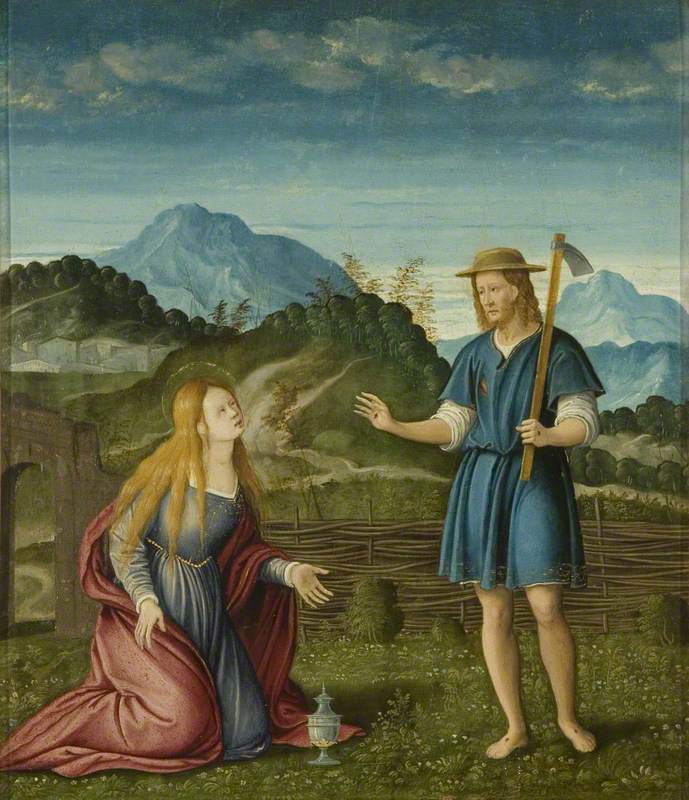
Image credit: Bristol Museums, Galleries & Archives
Noli me Tangere: Christ Appearing to the Magdalen c.1525
Girolamo da Santacroce (1480/1485–1556)
Bristol Museums, Galleries & ArchivesShe is therefore a very important figure in the Christian story.
One of the ways that Mary Magdalene is made recognisable is by her long flowing hair. This is a reference to her traditional identification with the woman who anointed Christ's feet with ointment from an alabaster jar or box, and dried them with her hair.
In John's Gospel, the anointing is performed by Mary of Bethany (sister to Martha and Lazarus), while the woman remains unnamed in the accounts of the other three Gospels.
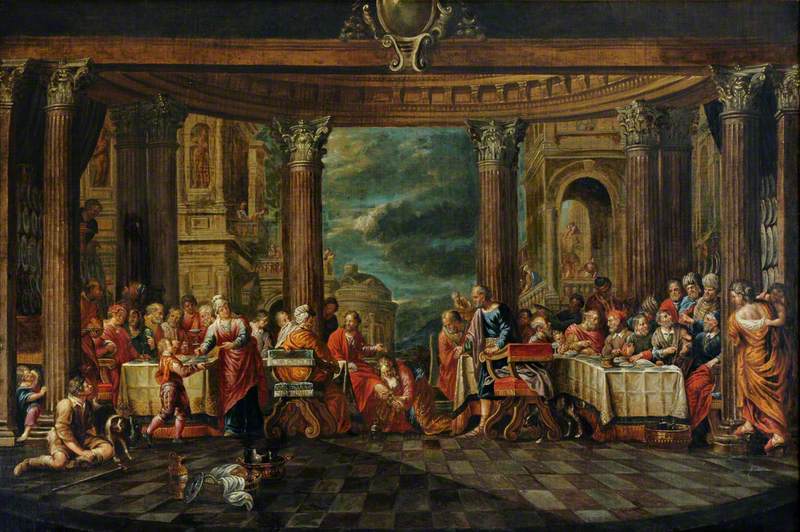
Image credit: National Trust Images
Mary Magdalen Washing Christ's Feet in the House of Simon Levi c.1600
Italo/Flemish School
National Trust, GoddardsDespite this apparent confusion, the ointment jar became another key attribute of the Magdalene, depicted in many different ways by artists. It is often there to cement the saint's identity, indicating that the painting isn't simply a portrait or of another female saint.

Image credit: The National Gallery, London
The Magdalen early 16th century
Jan Gossaert (c.1478–1532) (follower of)
The National Gallery, LondonAs related in the episode of Britain's Lost Masterpieces, Mary of Bethany was often identified as Mary Magdalene in Western Christianity due to a homily given by Pope Gregory the Great in the late sixth century AD. During this speech he taught about several women in the New Testament as though they were the same person. In contrast, Eastern Christianity instead distinguished three separate figures – the 'sinner' mentioned in Luke's Gospel, the sister of Martha and Lazarus (also known as Mary of Bethany), and Mary Magdalene.
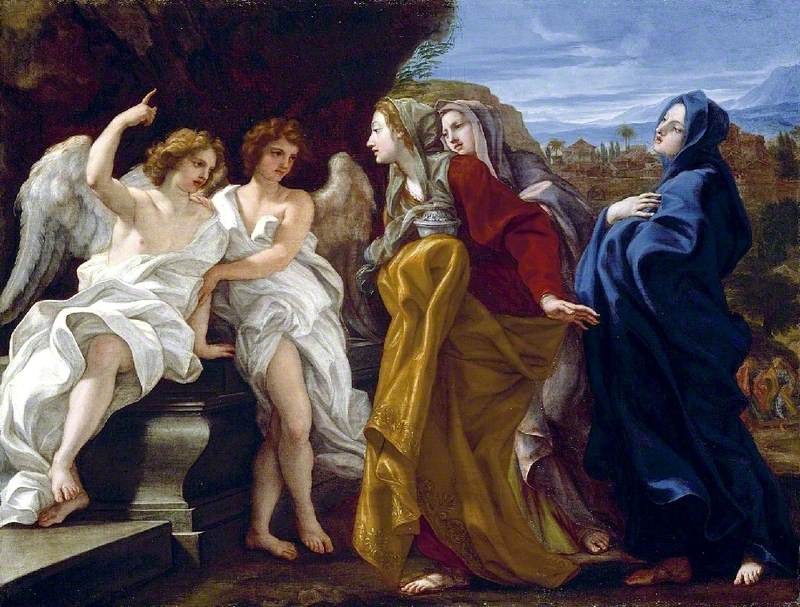
Image credit: The Fitzwilliam Museum
The Three Marys at the Sepulchre c.1684/1685
Giovanni Battista Gaulli (1639–1709)
The Fitzwilliam MuseumUntangling these figures has proved difficult, if not impossible. But added to the tangle is a whole array of other stories about Mary Magdalene that grew during the Middle Ages and were then portrayed in art.
The conversion of Mary Magdalene is not related in the Bible, but became a popular subject. This version by Veronese is one of the artist's earliest works, painted when he was about 18.
As mentioned above, by Veronese's time Mary Magdalene was considered by the Church to be a promiscuous woman or a prostitute, and here Martha takes her sister Mary to the Temple to hear Jesus preach. Overcome, Mary blushes and sinks to her knees, converted by her encounter with Christ to a life of piety. The jewellery slipping from her neck suggests a rejection of worldly things.
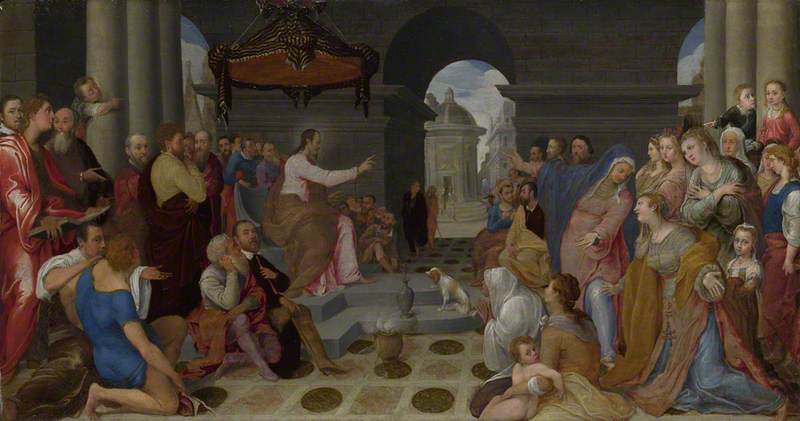
Image credit: The National Gallery, London
The Conversion of Mary Magdalene (after Federico Zuccaro) about 1562
Pedro Campaña (1503–1580)
The National Gallery, LondonPedro Campaña's painting depicts the same scene. It was inspired by a lost 1563 fresco by Federico Zuccaro, painted in Venice. Among the crowd of onlookers are numerous portraits, presumably of members of the Grimani family who commissioned it for their chapel.
Another key part of the Mary Magdalene story was the development of a series of artworks now known as 'Penitent Magdalens'. In this type of portrayal, the saint has seen the error of her ways and is depicted often as a hermit in a landscape or wilderness, lamenting her formerly sinful lifestyle.
Again, there is no record of this in the Bible, and the story itself was embellished over the years.
Confusingly, yet another Mary is now added to the story. The fourth-century Mary of Egypt was a hermit who lived in the desert, and whose clothes wore out and fell off. This gave licence to artists to depict Mary Magdalene as naked, covered by her hair (sometimes actually with long, flowing body hair).
Indeed, various Penitent Magdalens over the centuries display a surprising amount of flesh – almost certainly this can be read as the manifestation of the male gaze, using an ostensibly pious subject of a saint, but one which conveniently allows for liberal amounts of nudity, depending on the conventions of the time.
This variation can be seen in two works after Titian. In his earlier 1531 version of the scene, shown here in a copy from Burton Constable Hall, he portrays her with her breasts on show.
In this work at Belton Hall, after Titian's work of 1565 (the original is in the Hermitage), he prefers a more modest composition, possibly in reaction to the ongoing Counter-Reformation, which emphasised greater piety.

Image credit: The National Gallery, London
The Magdalen perhaps about 1518-19
Correggio (c.1489–1534) (attributed to)
The National Gallery, LondonIn this work, Correggio takes a new artistic direction with the composition, portraying Mary Magdalene as full length in a landscape. She turns from her book to look at the viewer, with feet crossed and breasts exposed.
This version by Annibale Carracci also shows the influence of the Roman Catholic Counter-Reformation, with its renewed focus on penitence and morality. Mary Magdalene is again shown in meditation on her sins. Her sorrowful tears, heavenwards gaze and retreat into the wilderness signal her sincere penitence.
Artists continue to depict Mary Magdalene in the wilderness, but often with the jar, and sometimes with other attributes such as a skull (reminding the viewer that all must die).
According to another legend, Mary Magdalene's retreat into the wilderness actually took place in the French region of Provence. There she lived alone for 30 years and was brought sustenance by angels who sang to her.
All this was supposed to have happened in a solitary mountain retreat near Sainte-Baume. Seven times a day, angels came down and lifted her up to heaven, where she saw a vision of the celestial bliss prepared for the repentant sinner.
In this work by Lo Spagno, she is traditionally depicted, naked except for her long hair, floating to heaven.
Going back to the Biblical accounts of Mary Magdalene, one of the most depicted scenes of her story is taken from the Gospel of John, where she finds the tomb of Jesus empty and weeps. She then meets a man who she mistakes for a gardener, but he is in fact the resurrected Jesus.
Artists have depicted this moment in a remarkably similar way since the Renaissance, with Christ appearing with a gardener's hat or holding a gardening implement, and Mary kneeling.
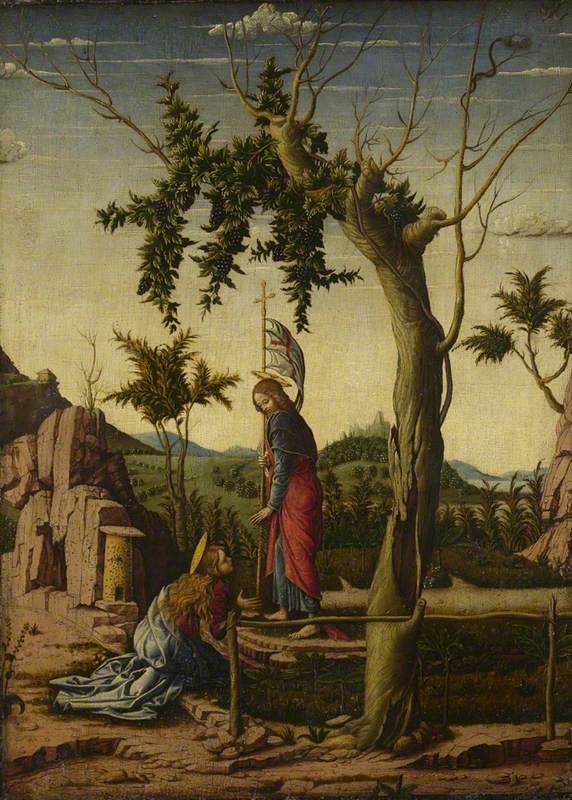
Image credit: The National Gallery, London
Noli me Tangere perhaps 1460-1550
Andrea Mantegna (c.1431–1506) (imitator of)
The National Gallery, LondonWhen Jesus calls her by name, she recognises him and reaches out to him, but he says in the Gospel: 'Touch me not, for I am not yet ascended to my father'.

Image credit: The National Gallery, London
Noli me Tangere probably about 1370-5
Jacopo di Cione (c.1320–1400) (probably)
The National Gallery, LondonThe first part of these words in Latin is 'Noli me tangere' and this is often how this scene is titled in art.
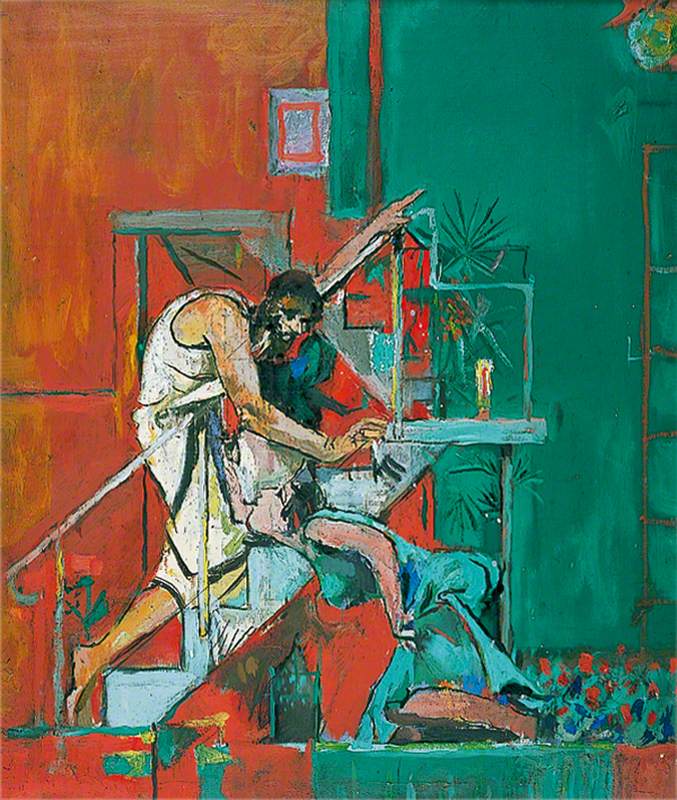
© estate of Graham Sutherland. Image credit: Pallant House Gallery, Chichester
Christ Appearing to Mary Magdalen (Noli me Tangere) 1961
Graham Vivian Sutherland (1903–1980)
Pallant House GalleryWith her appealing journey from sinner to saint, the idea of Mary Magdalene continues to fascinate people today – just look at the popularity of The Da Vinci Code, were she is re-cast (yet again) as Jesus' wife and mother to a dynasty.
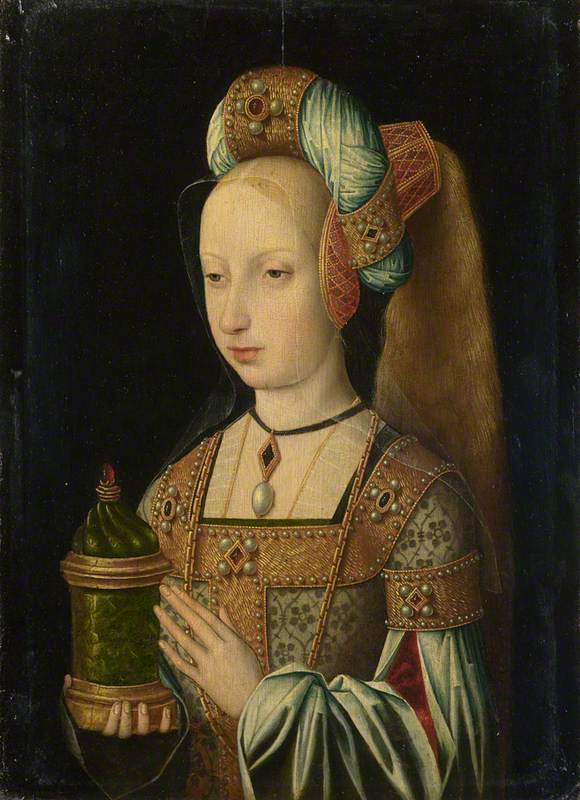
Image credit: The National Gallery, London
Master of the Magdalen Legend (c.1483–c.1530) (studio of)
The National Gallery, LondonThe world of western art was once full of religious commissions and pious paintings, and this gave artists the opportunity to explore the various aspects of Mary Magdalene's complex legend.
Perhaps the world has now moved on – with possibly a more secular outlook – but the intriguing figure of the Magdalen remains as a key figure in western art history.
Andrew Shore, Head of Content at Art UK
